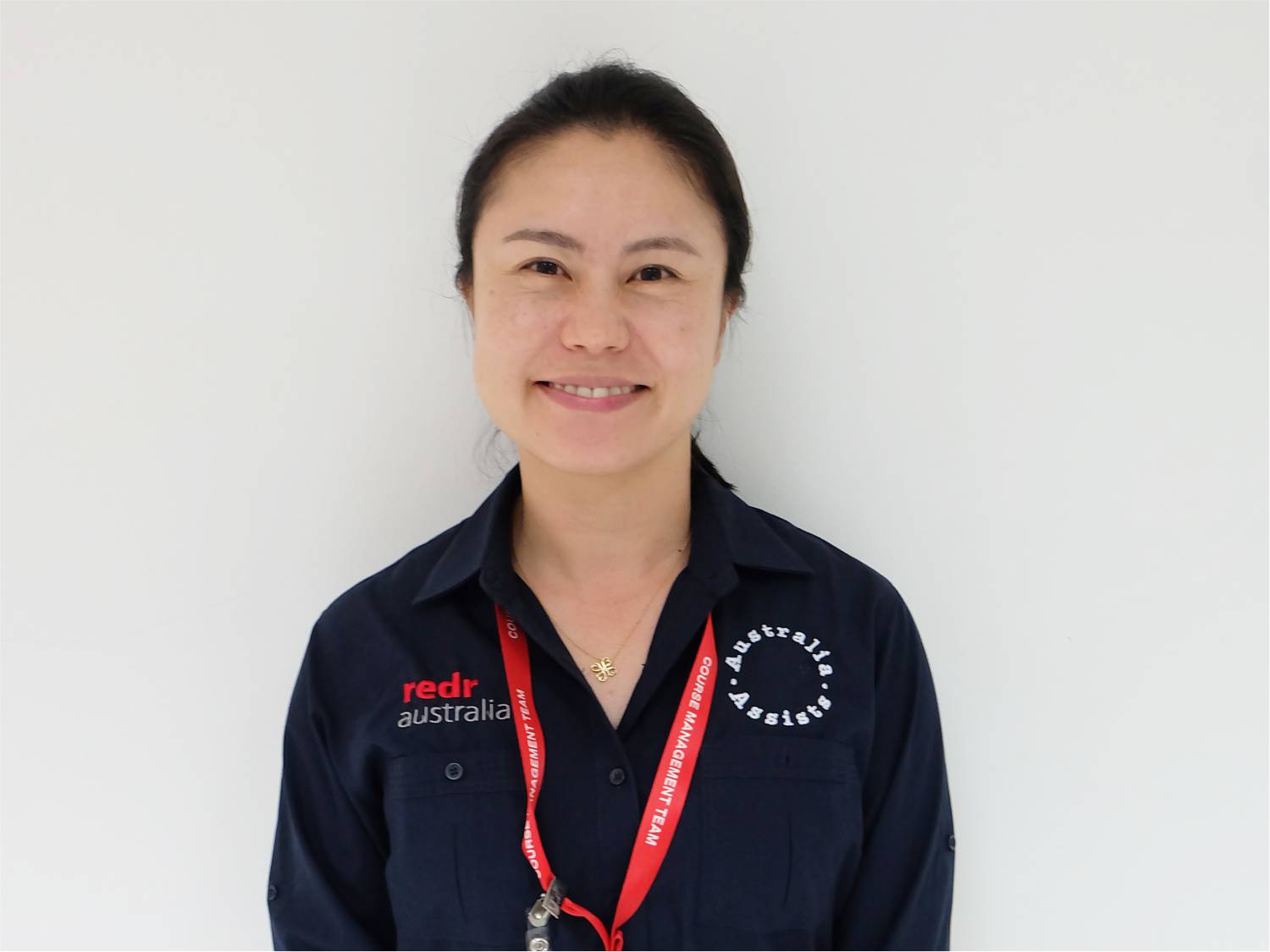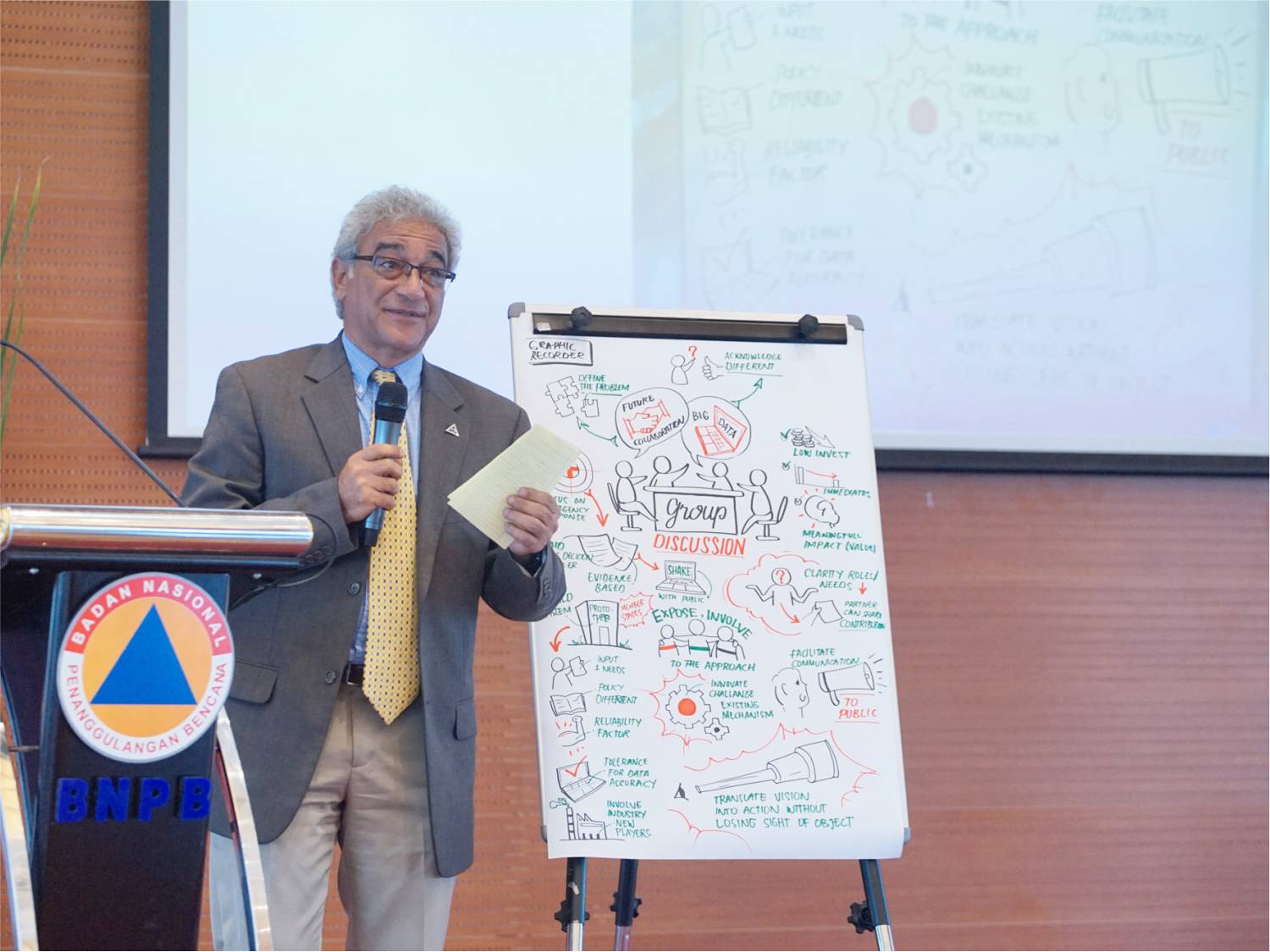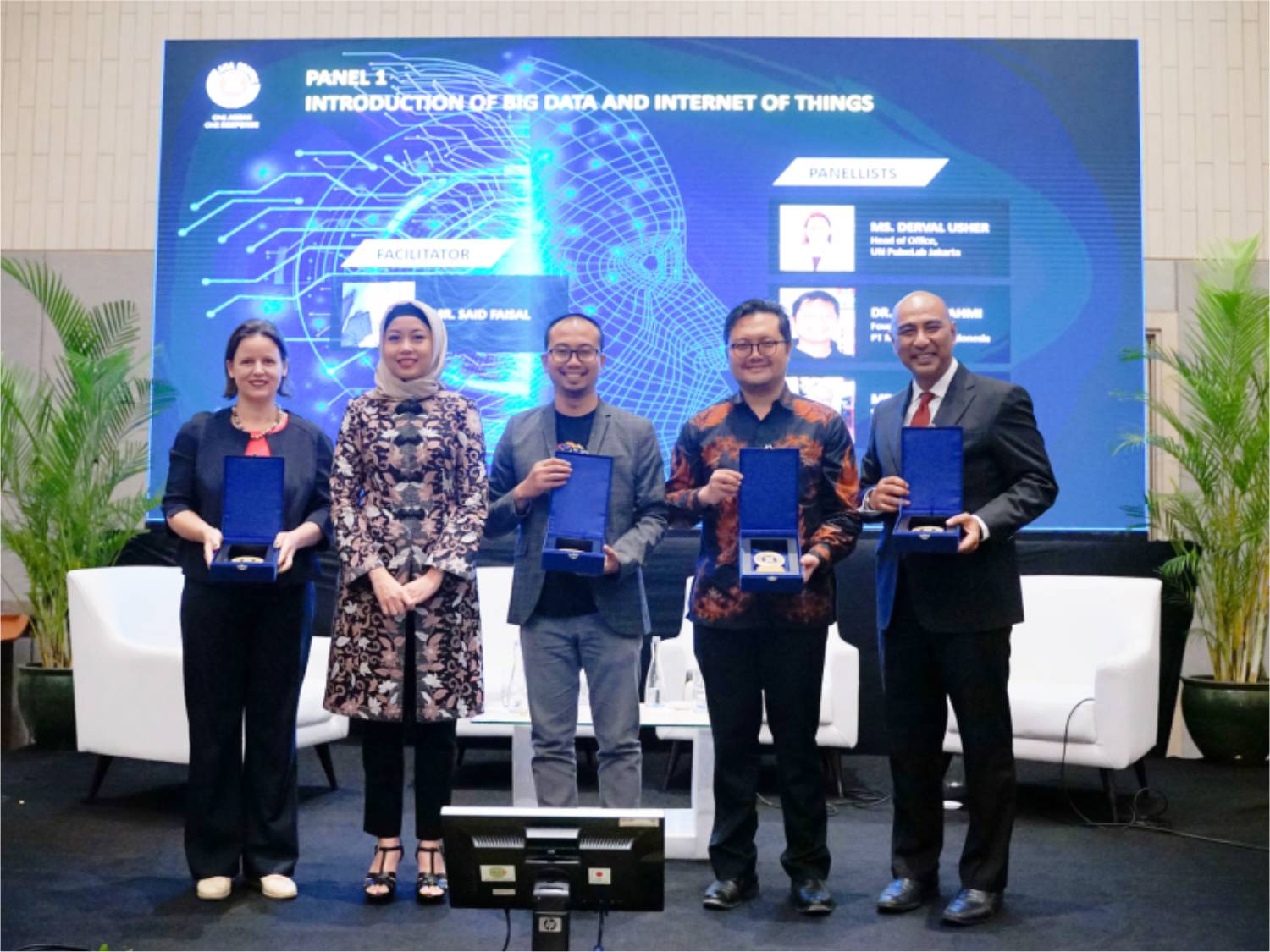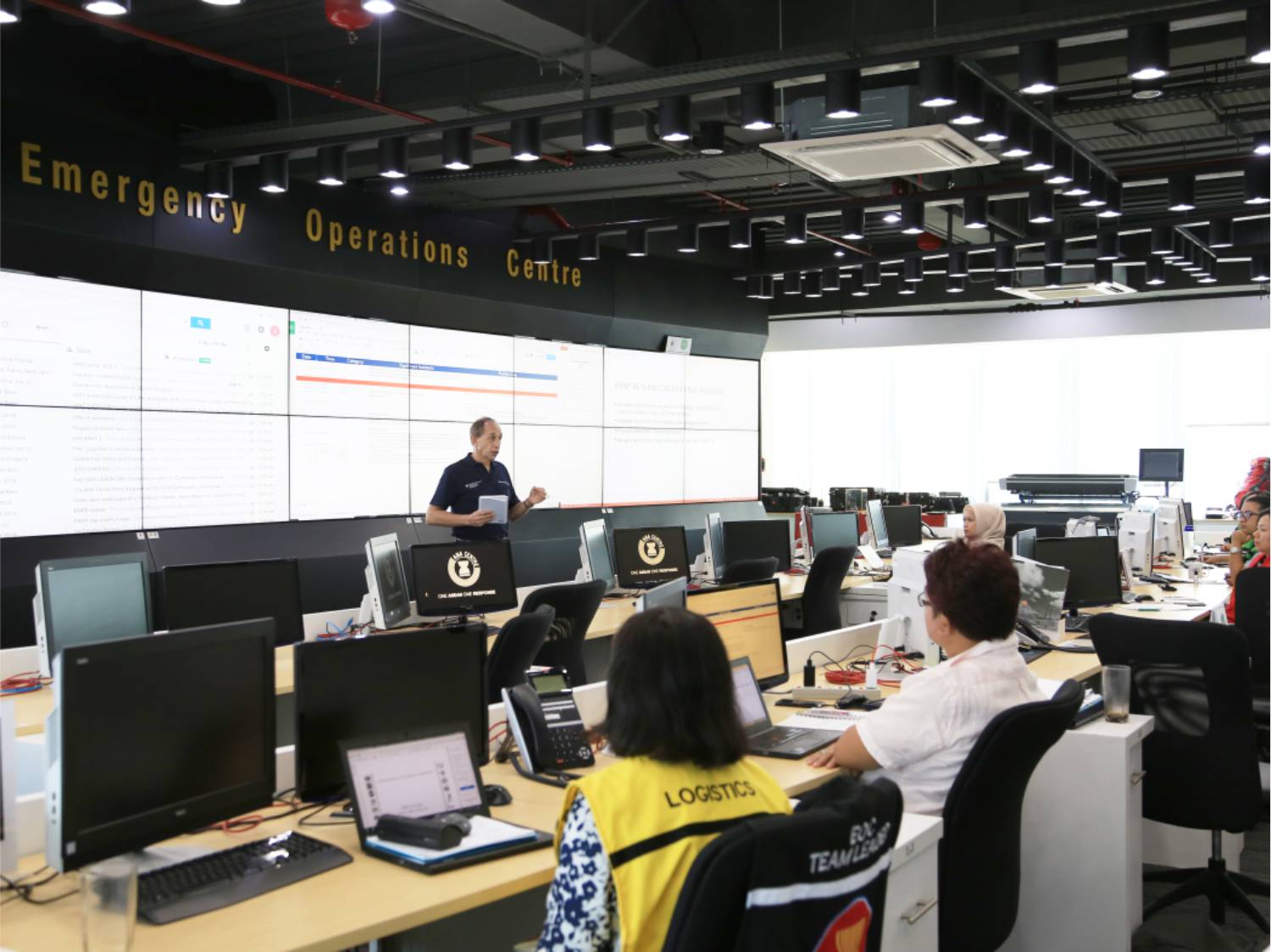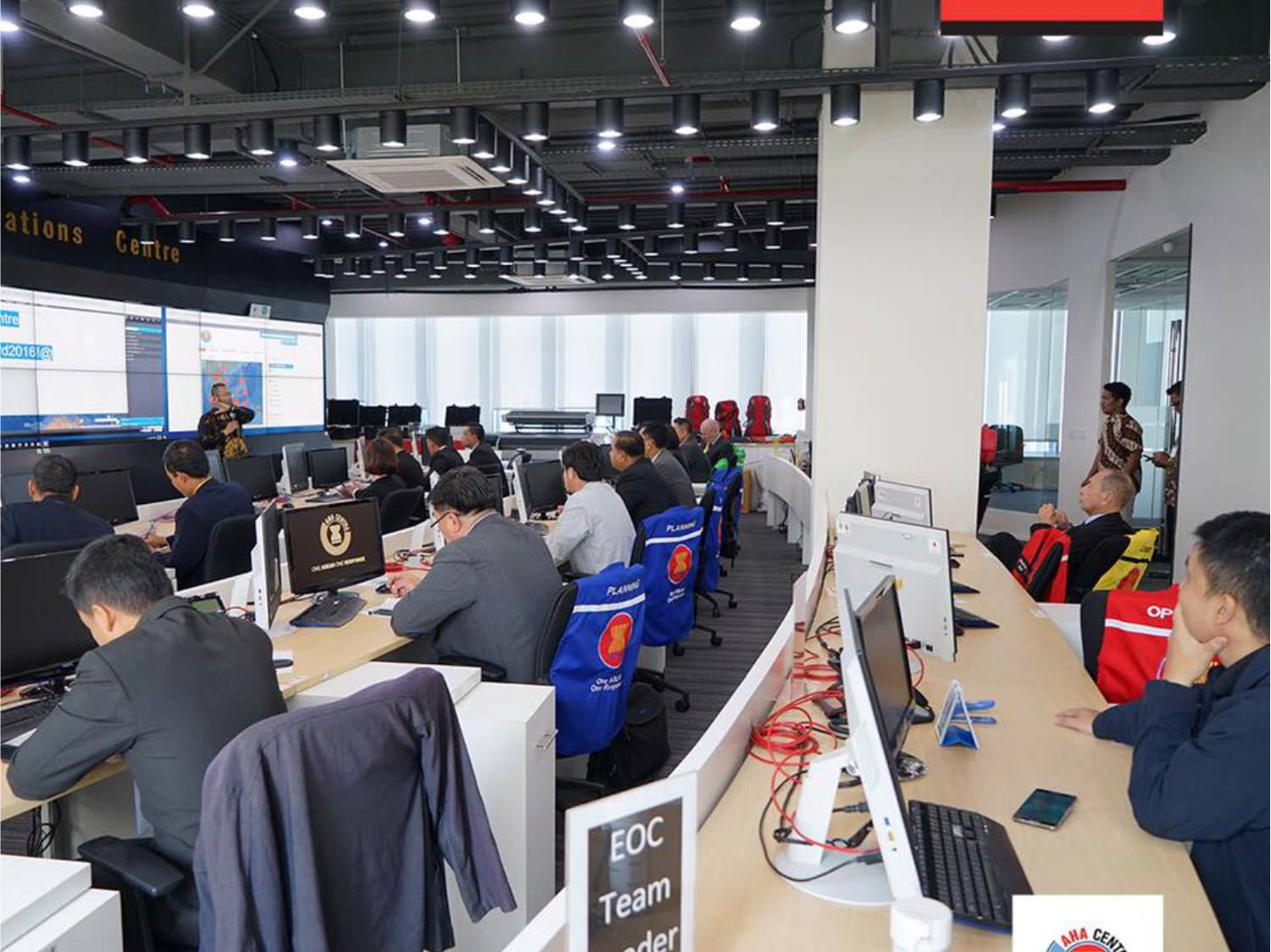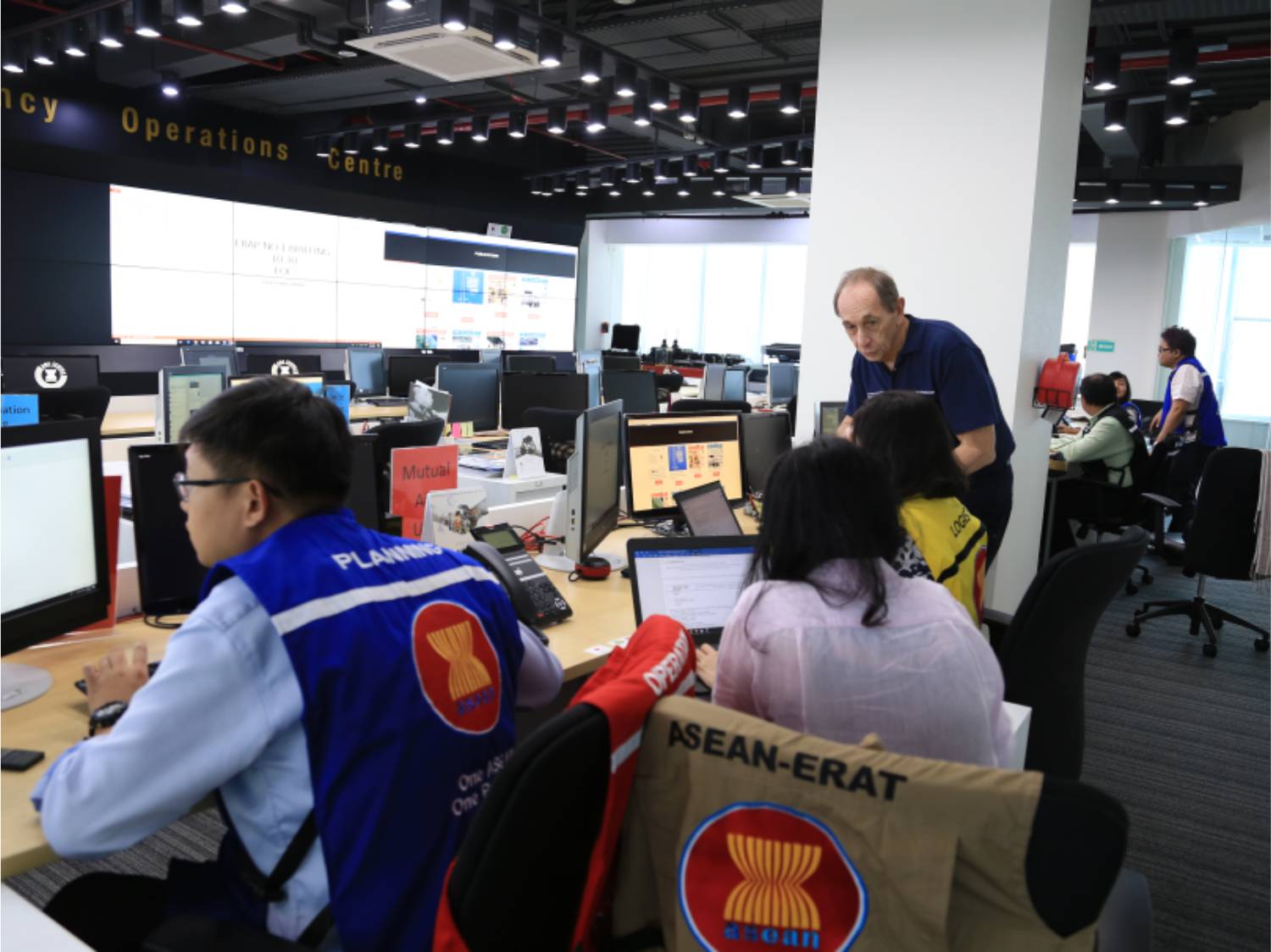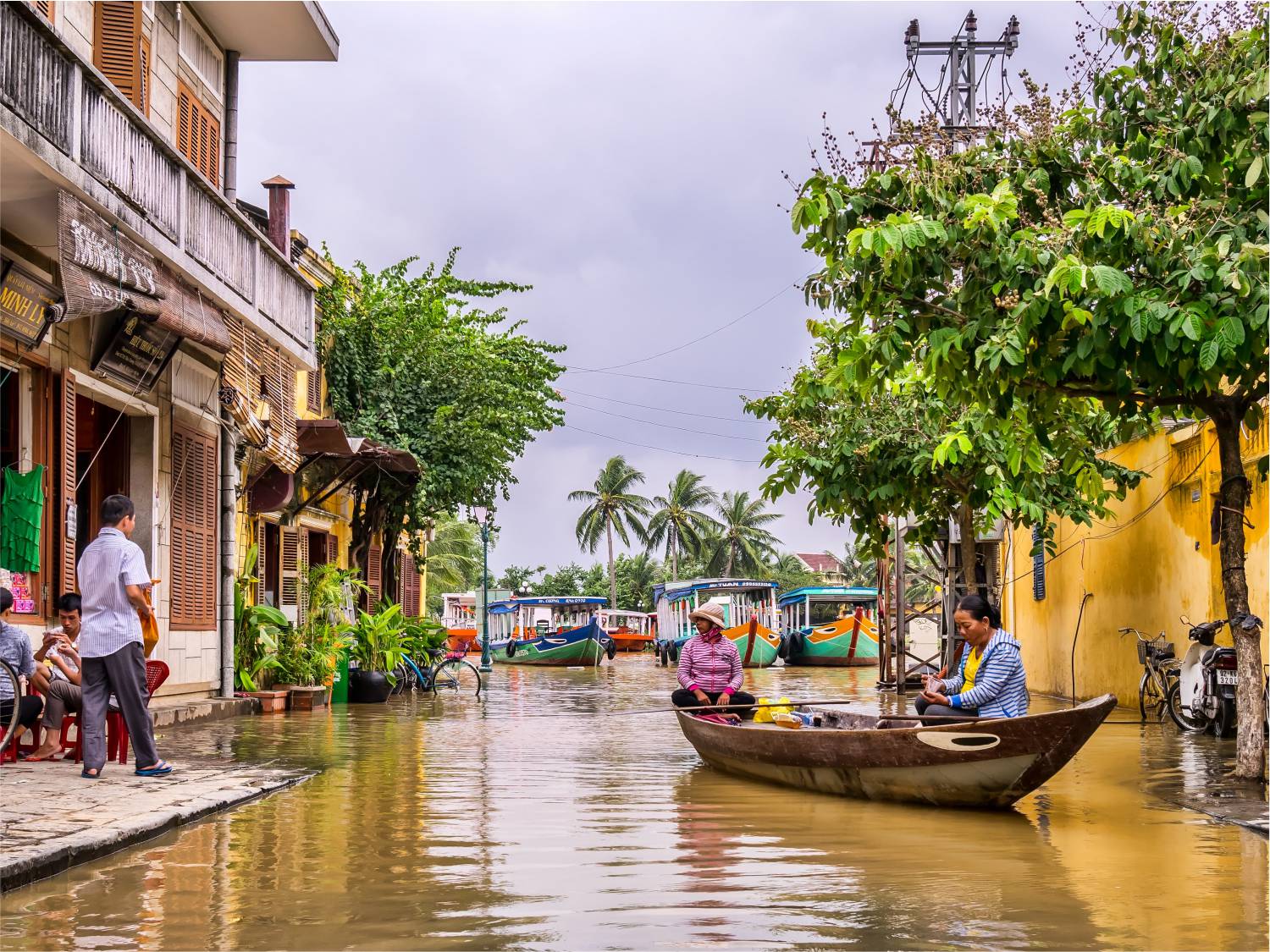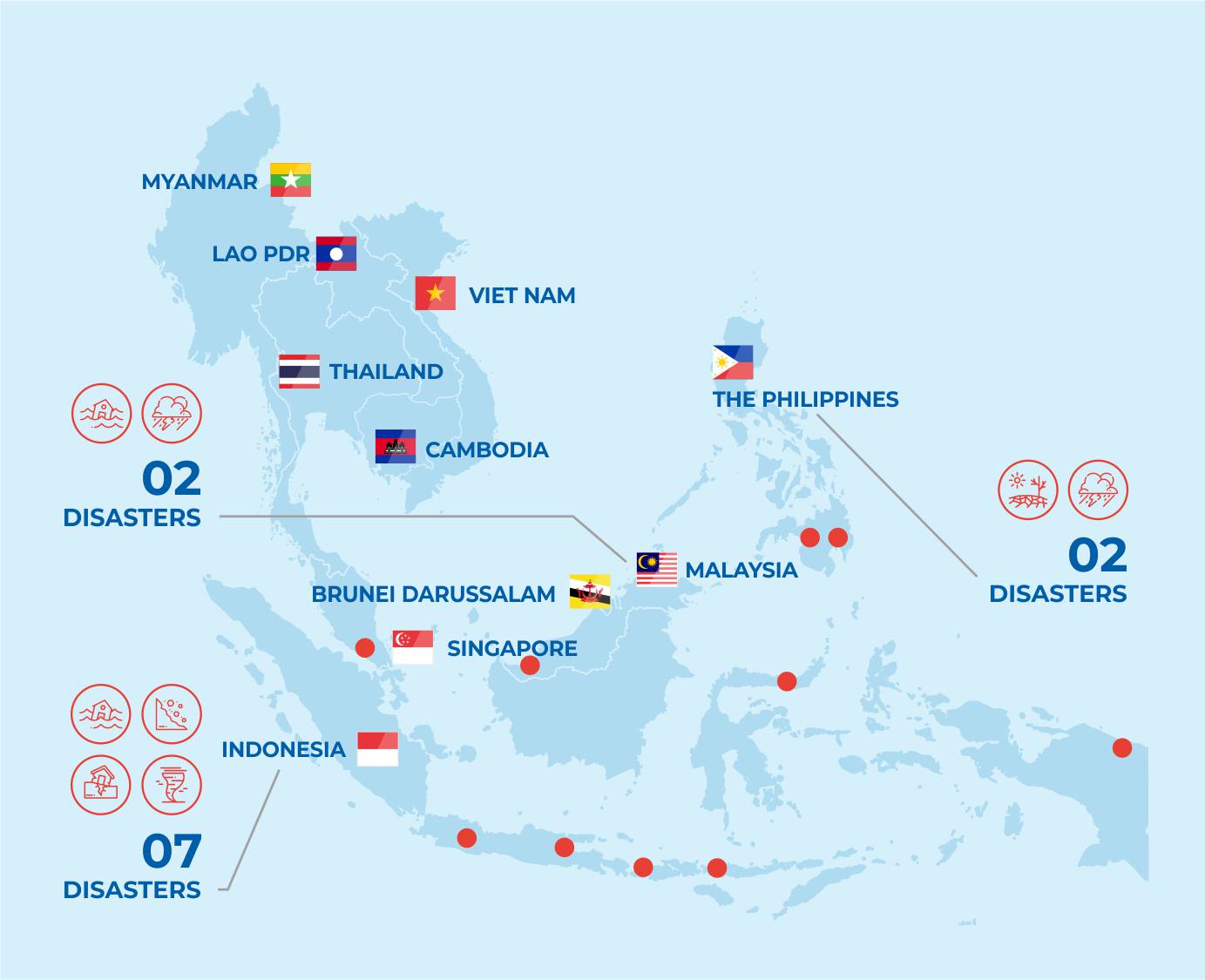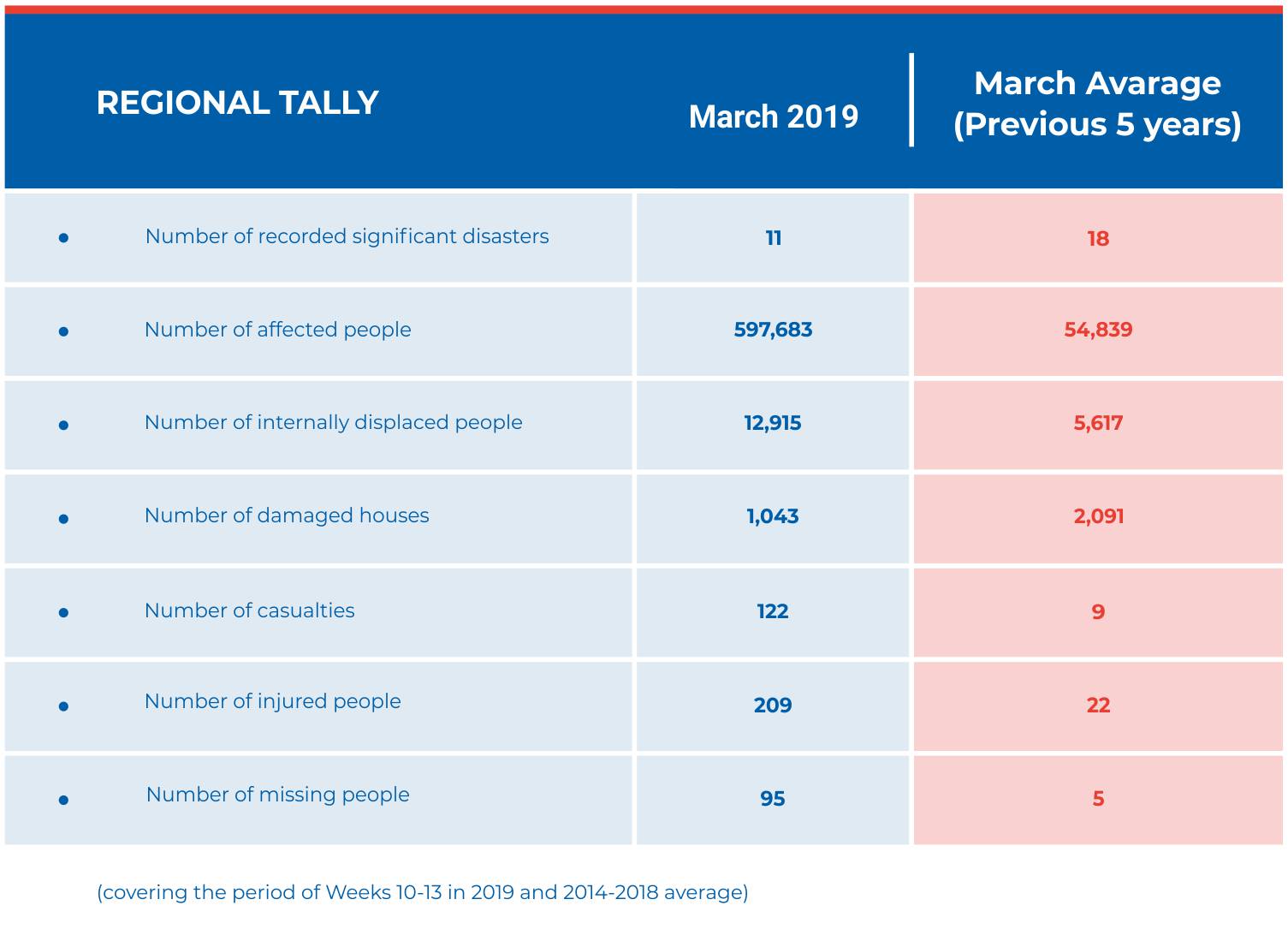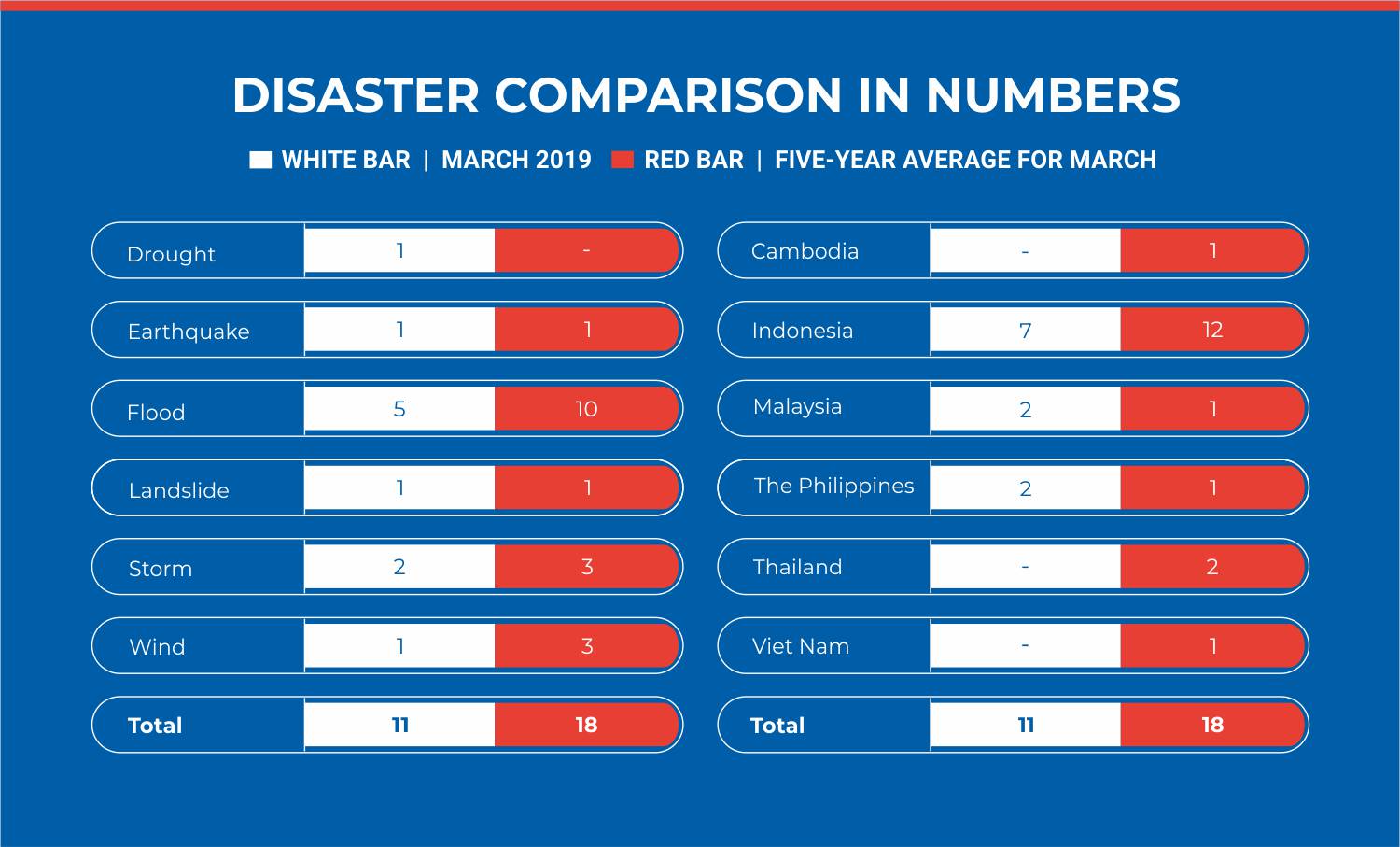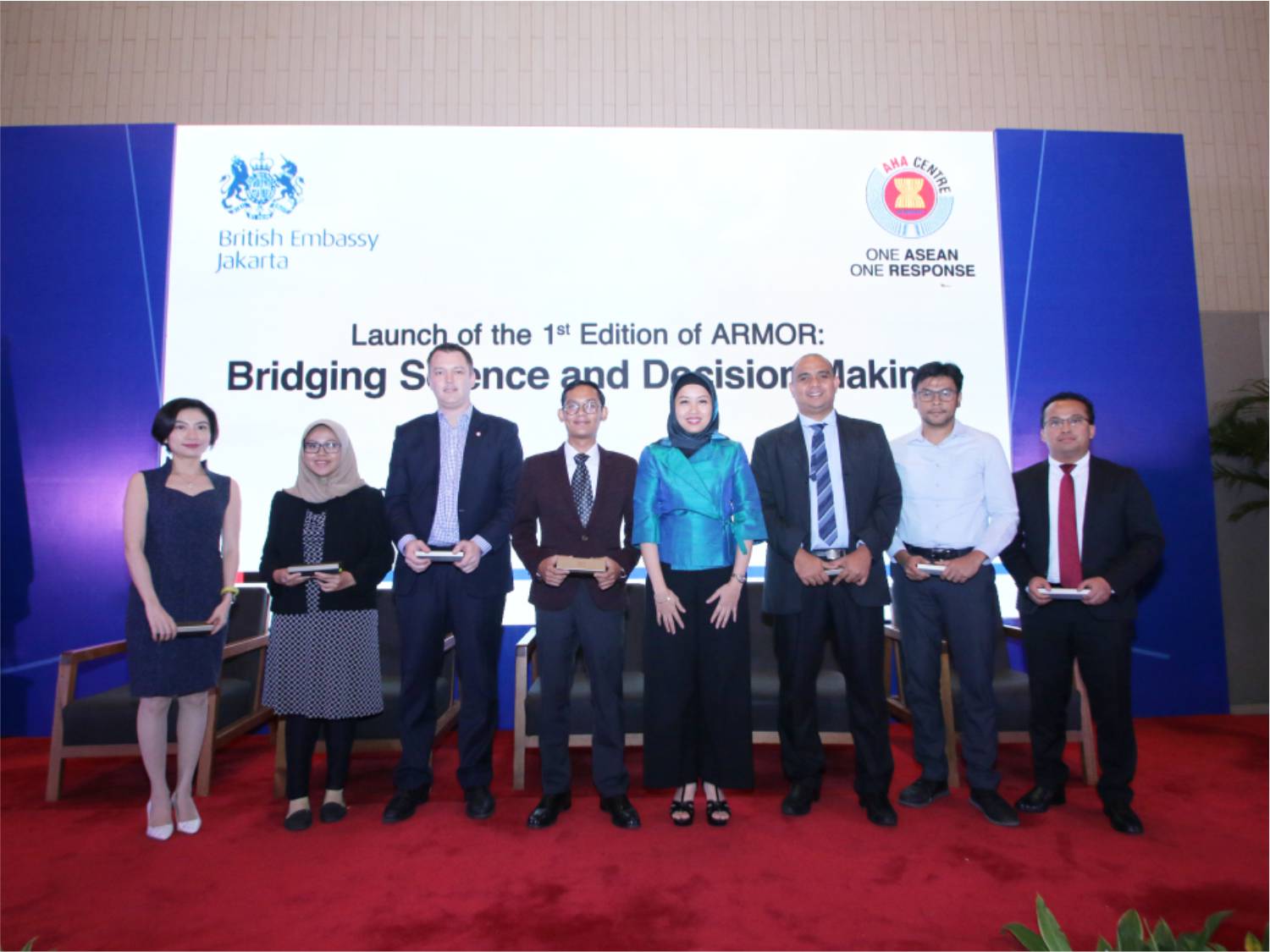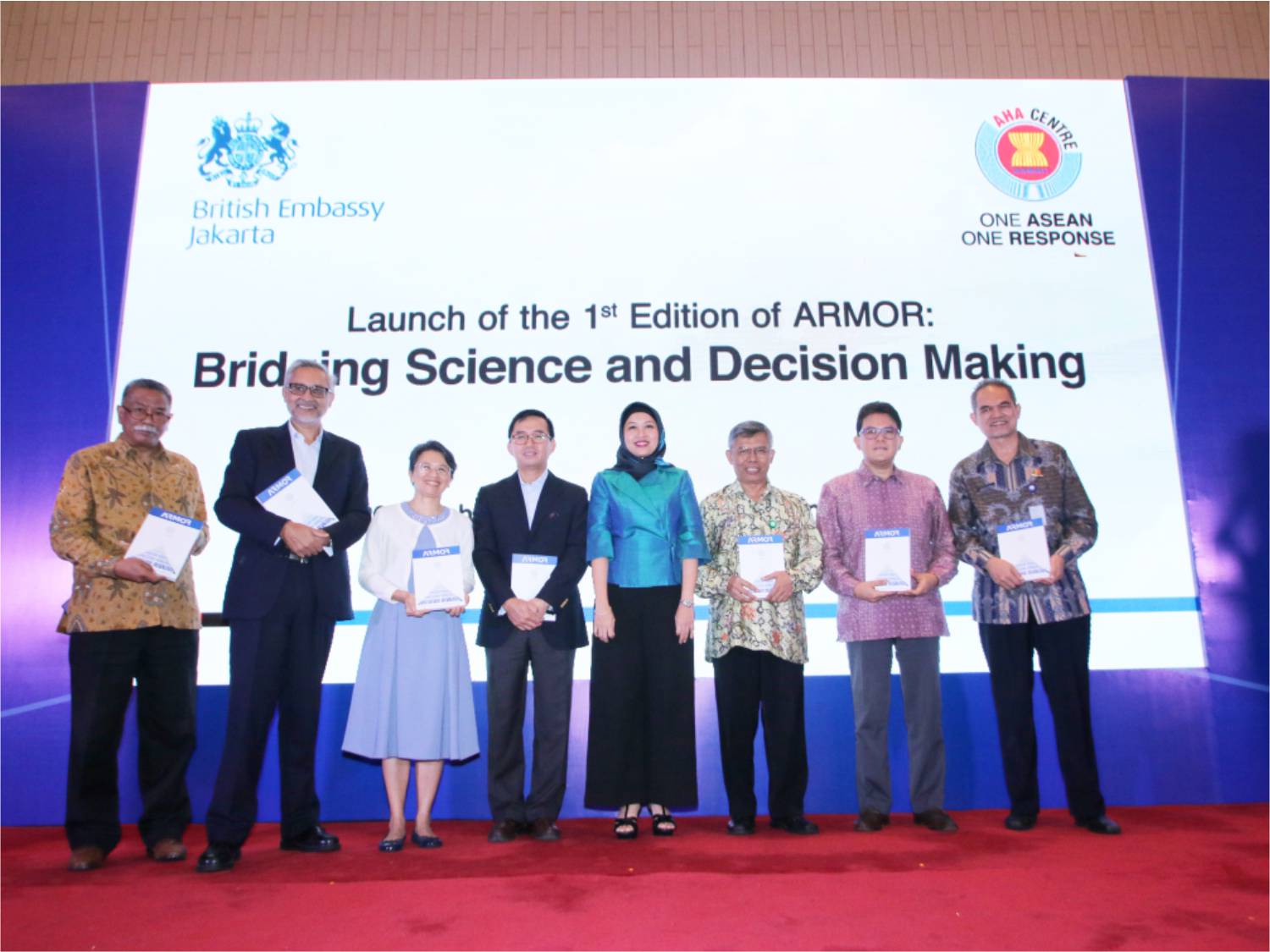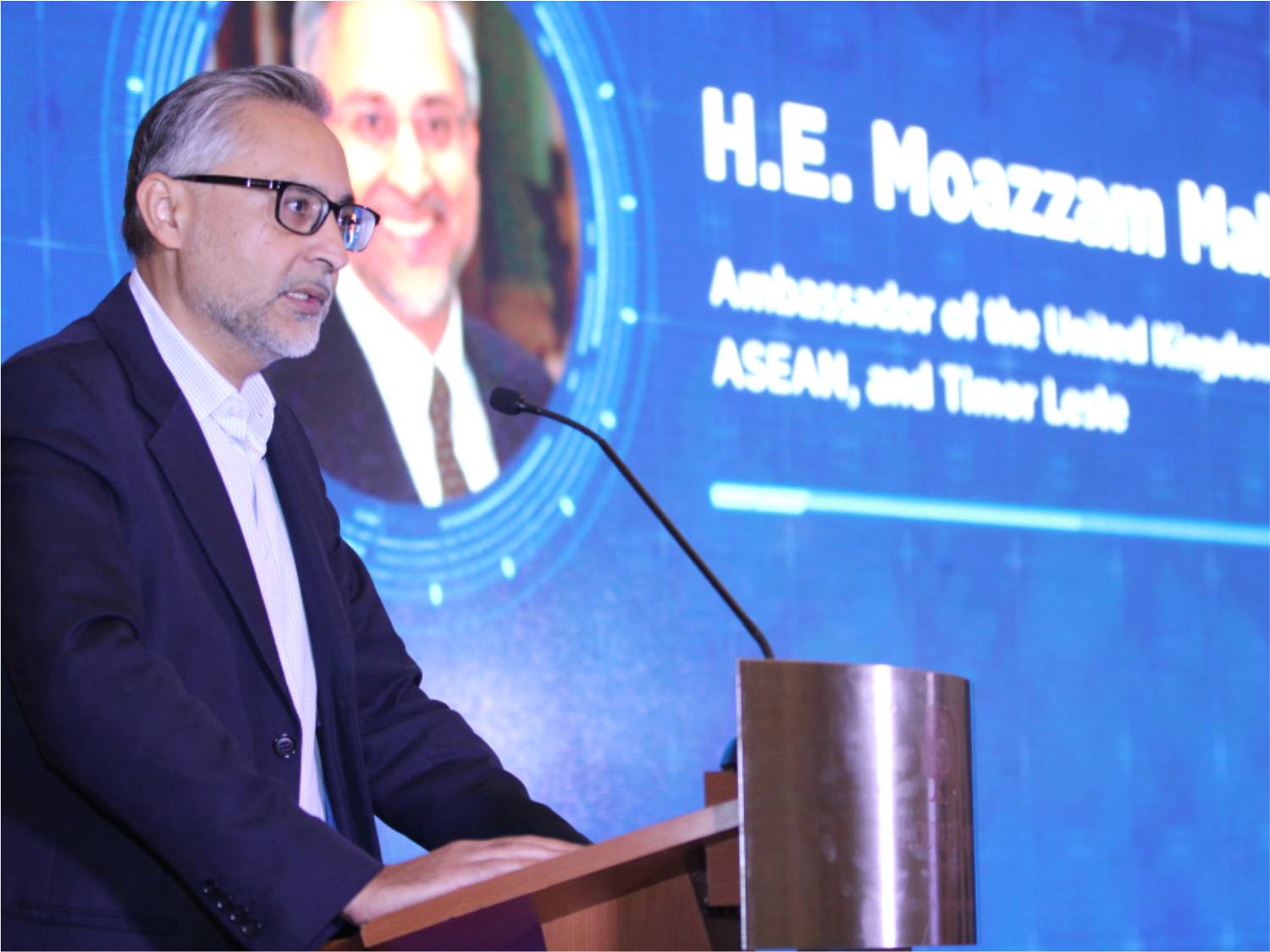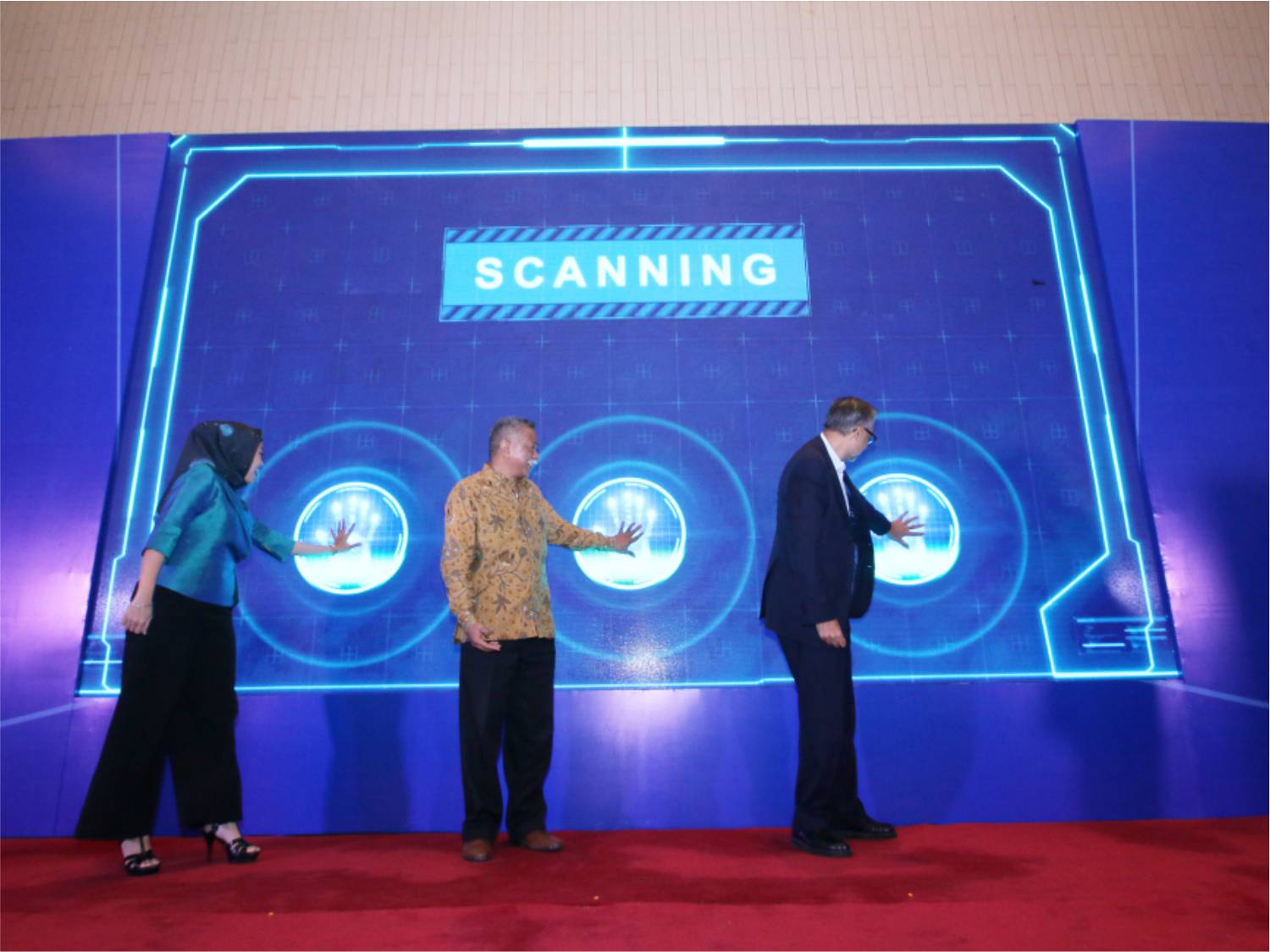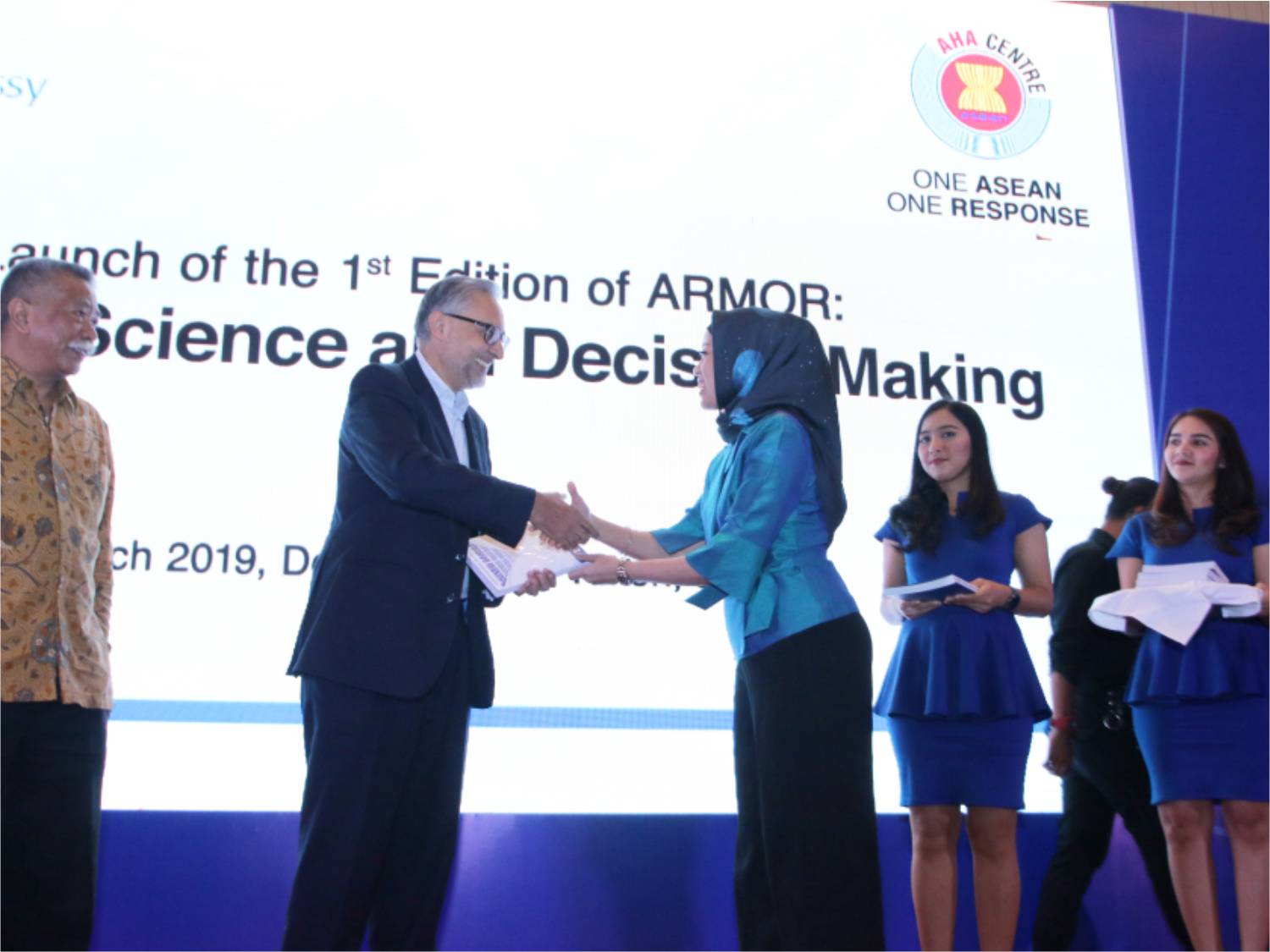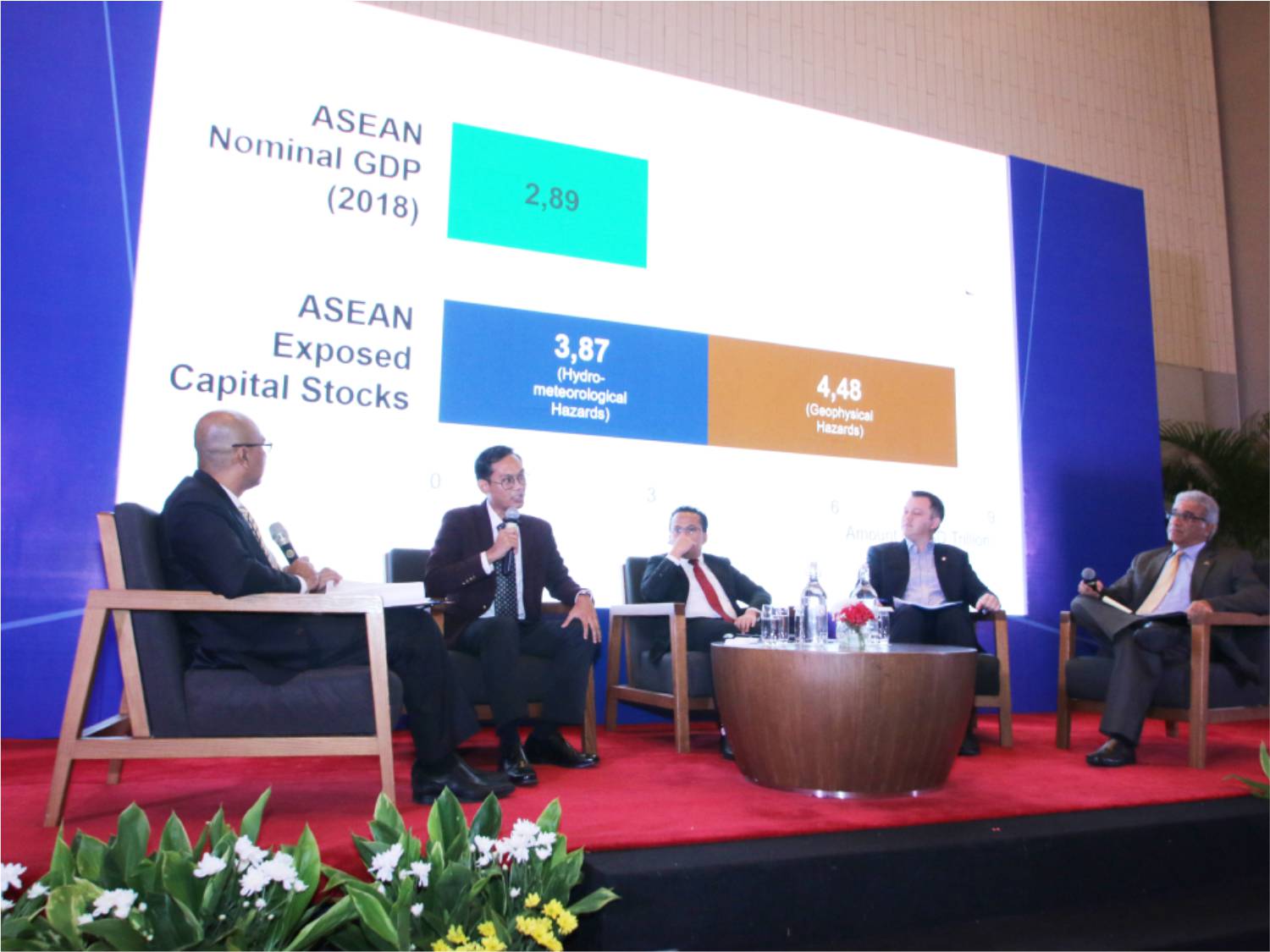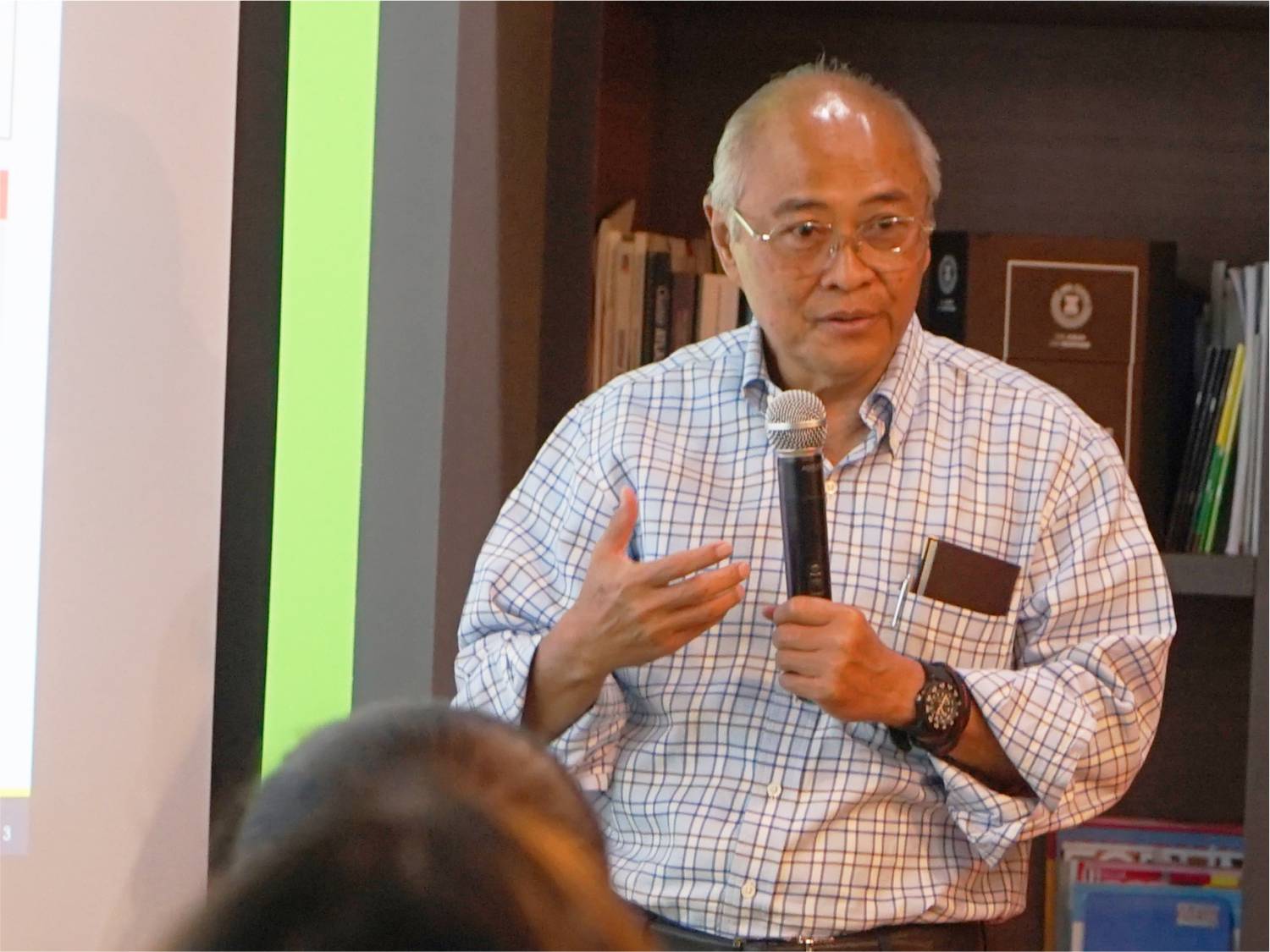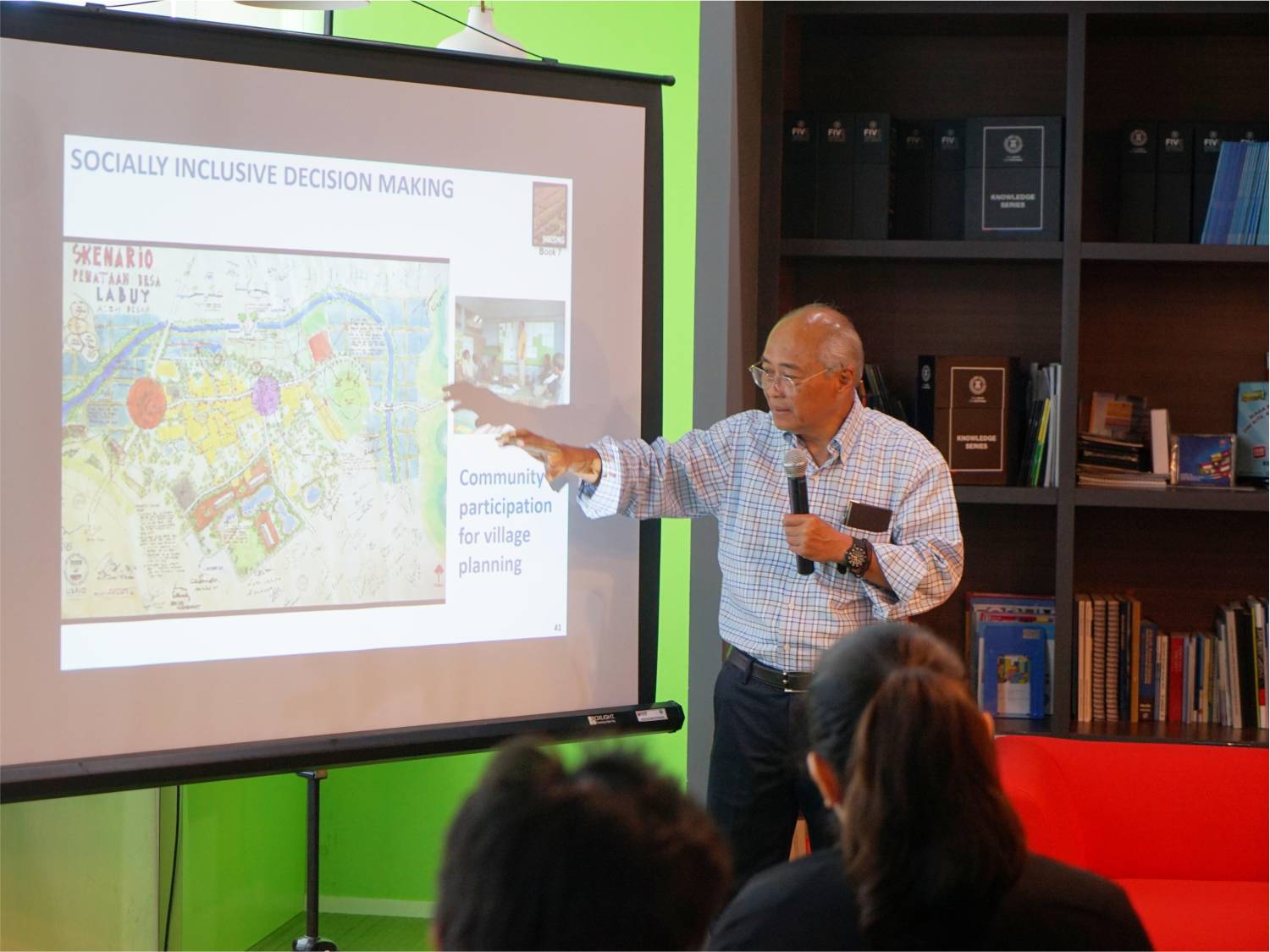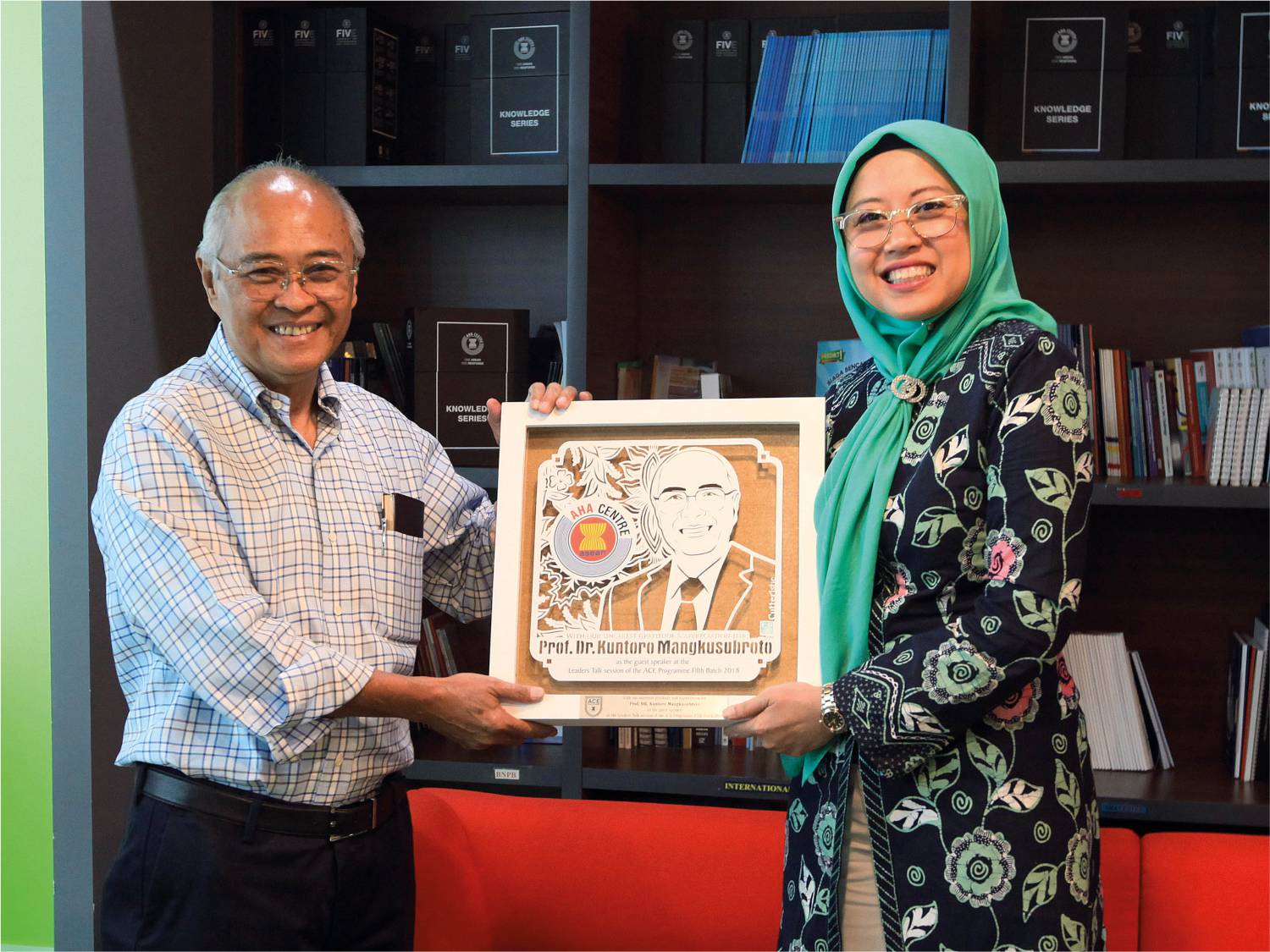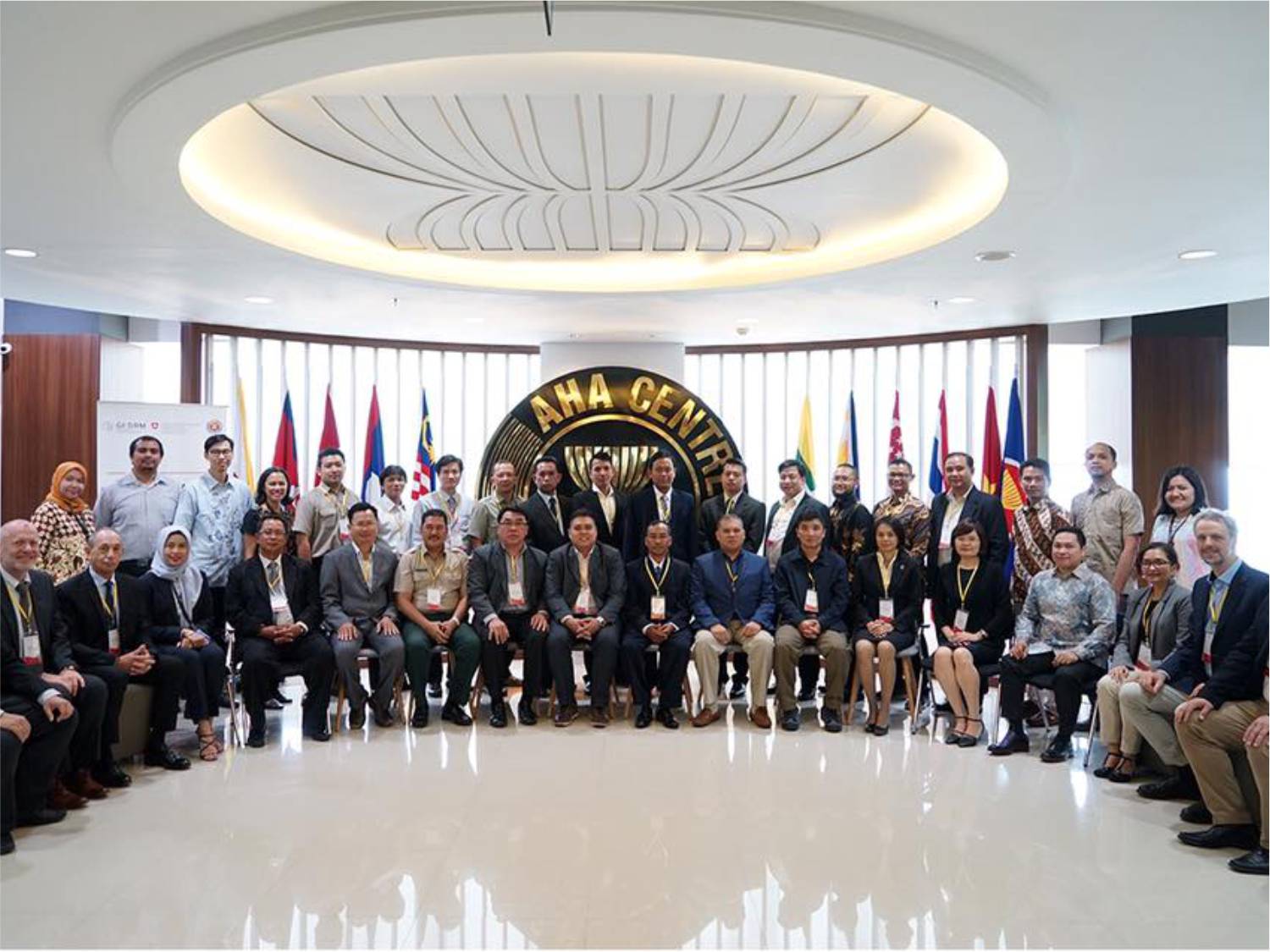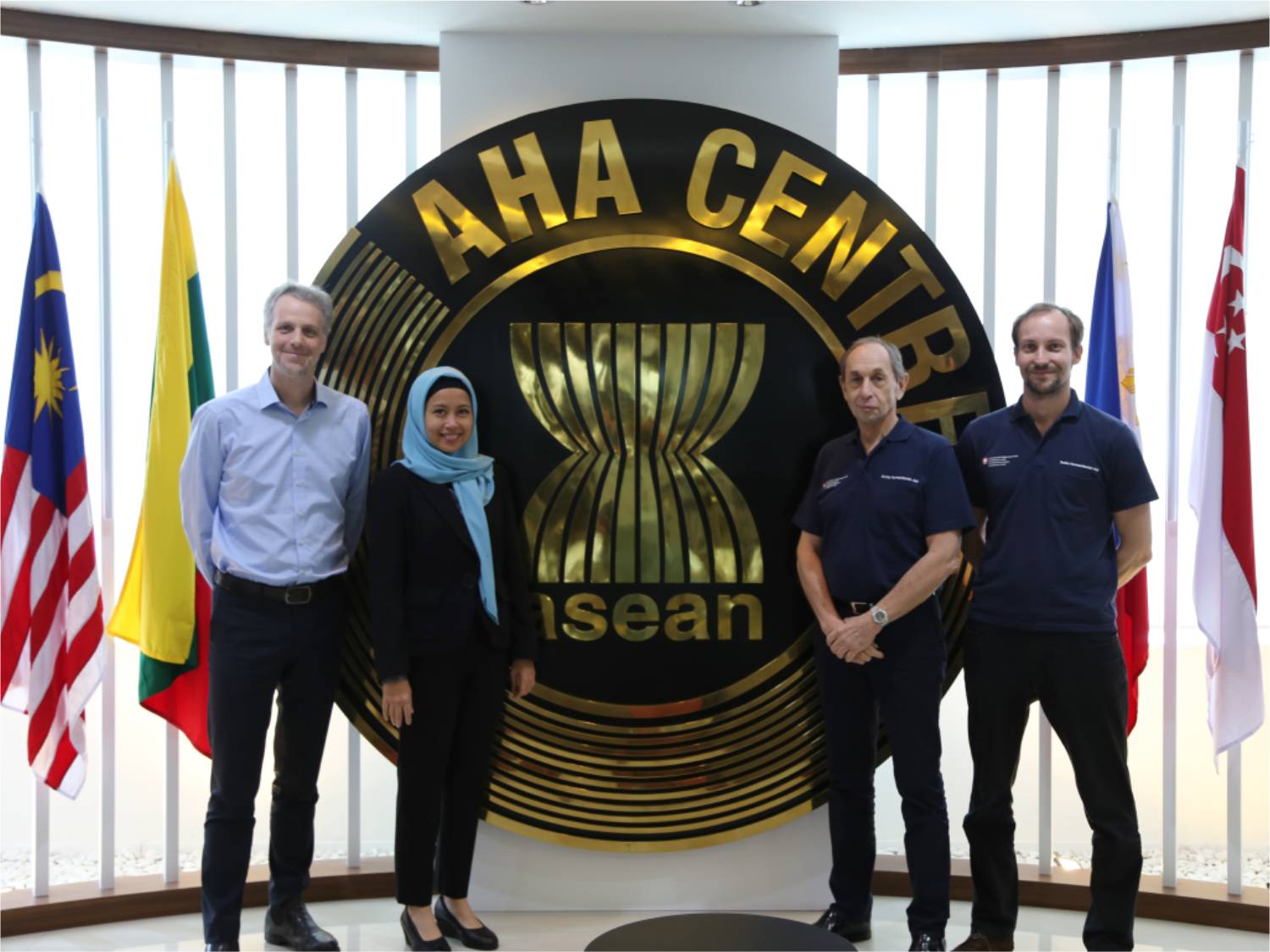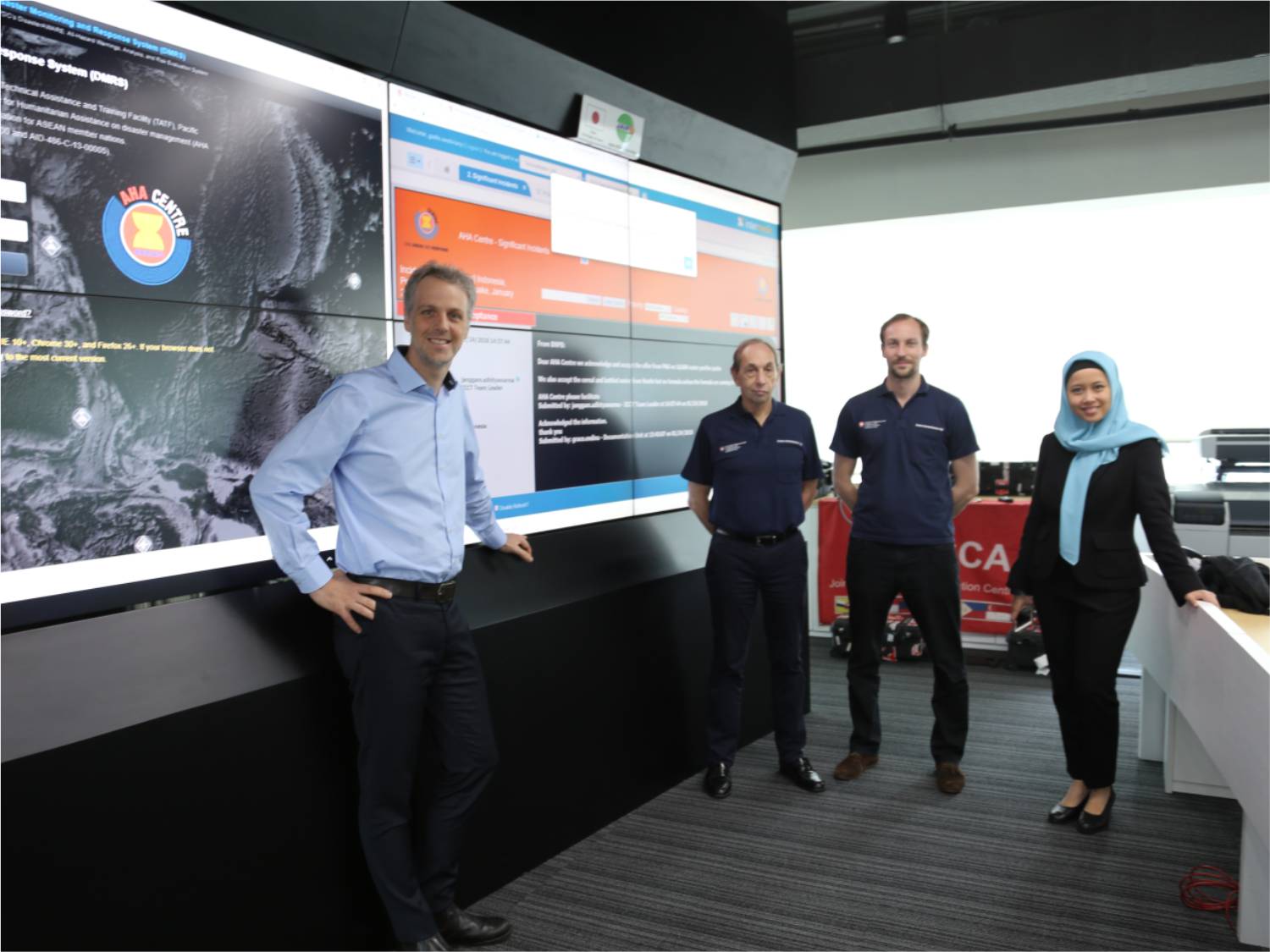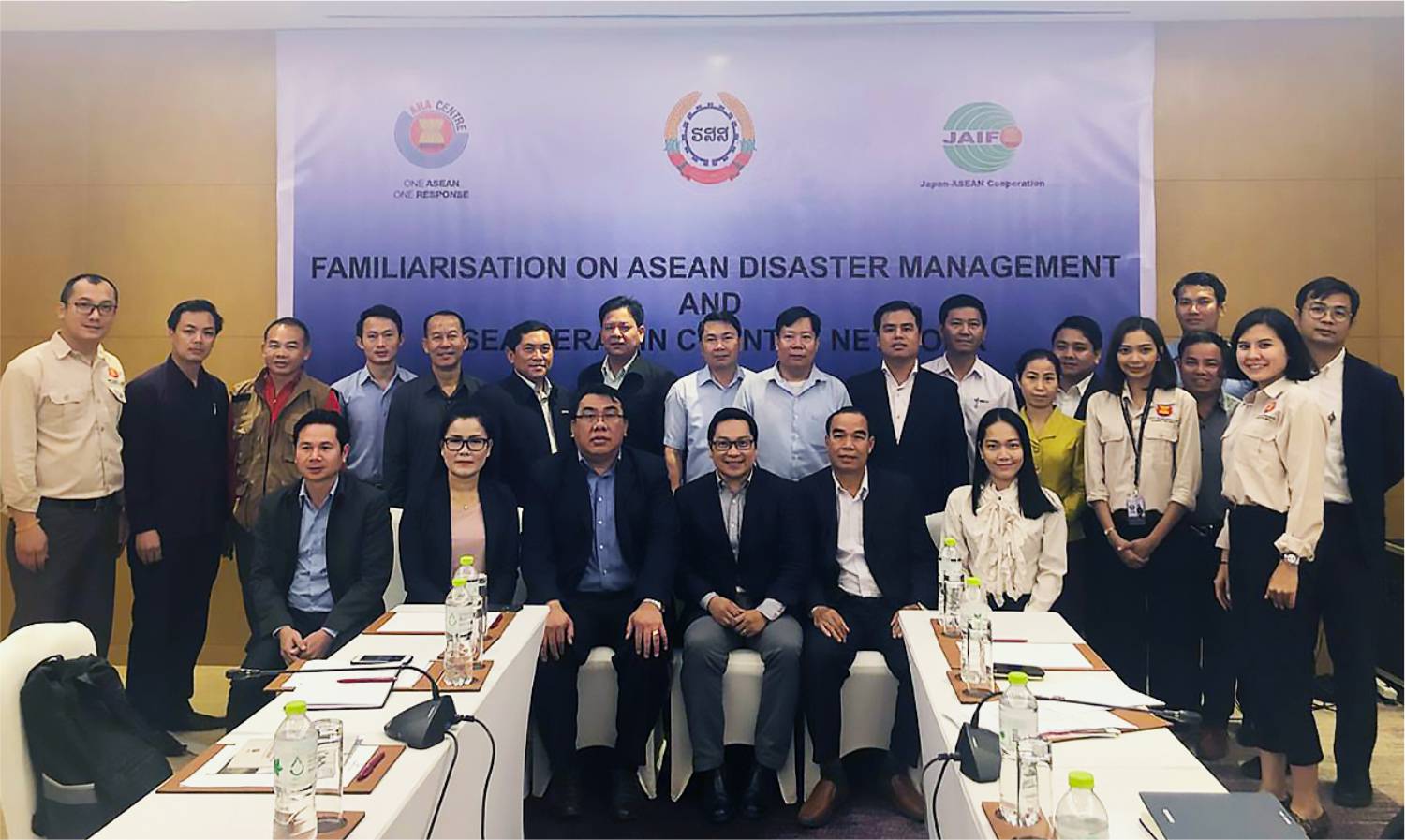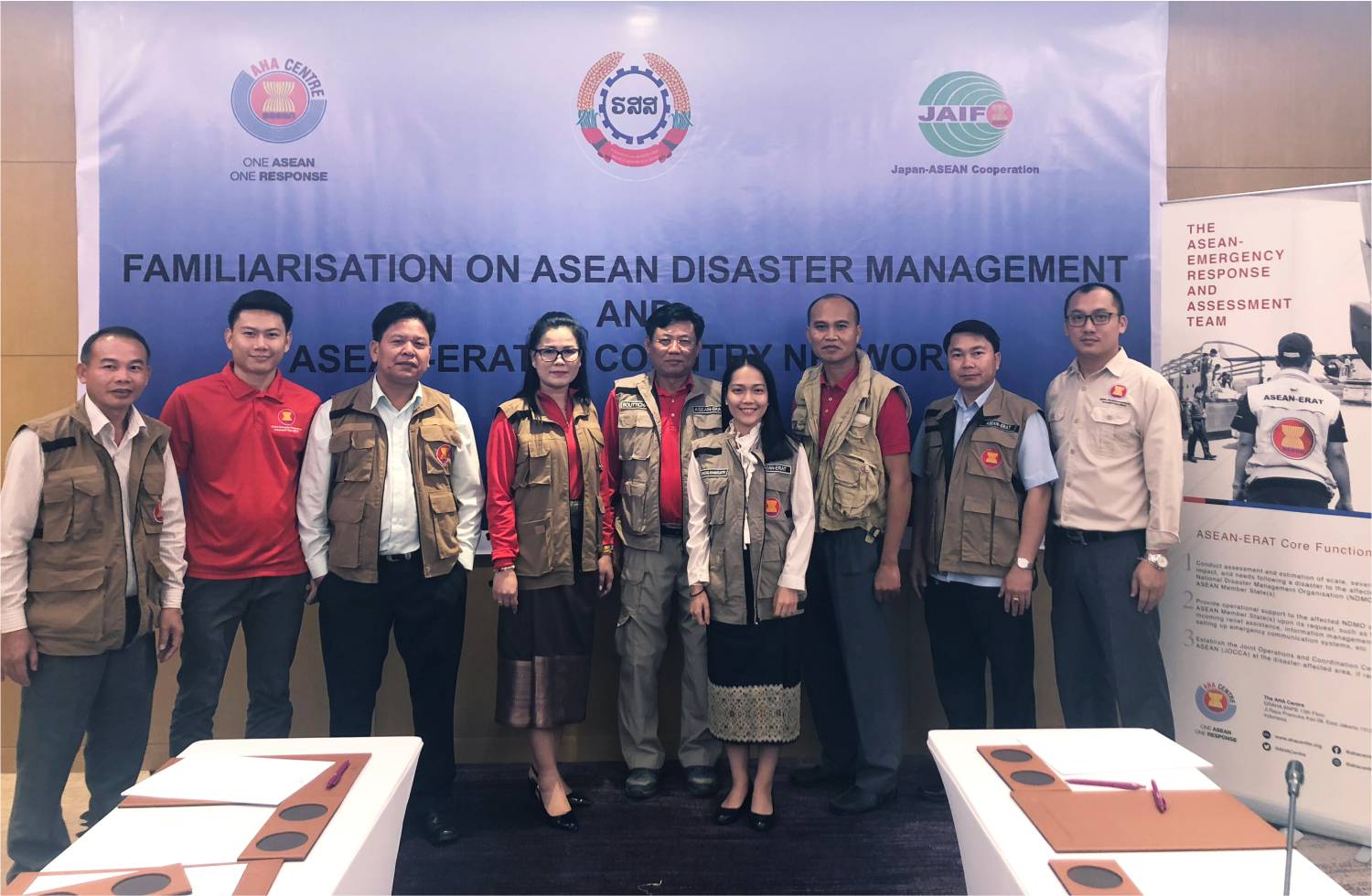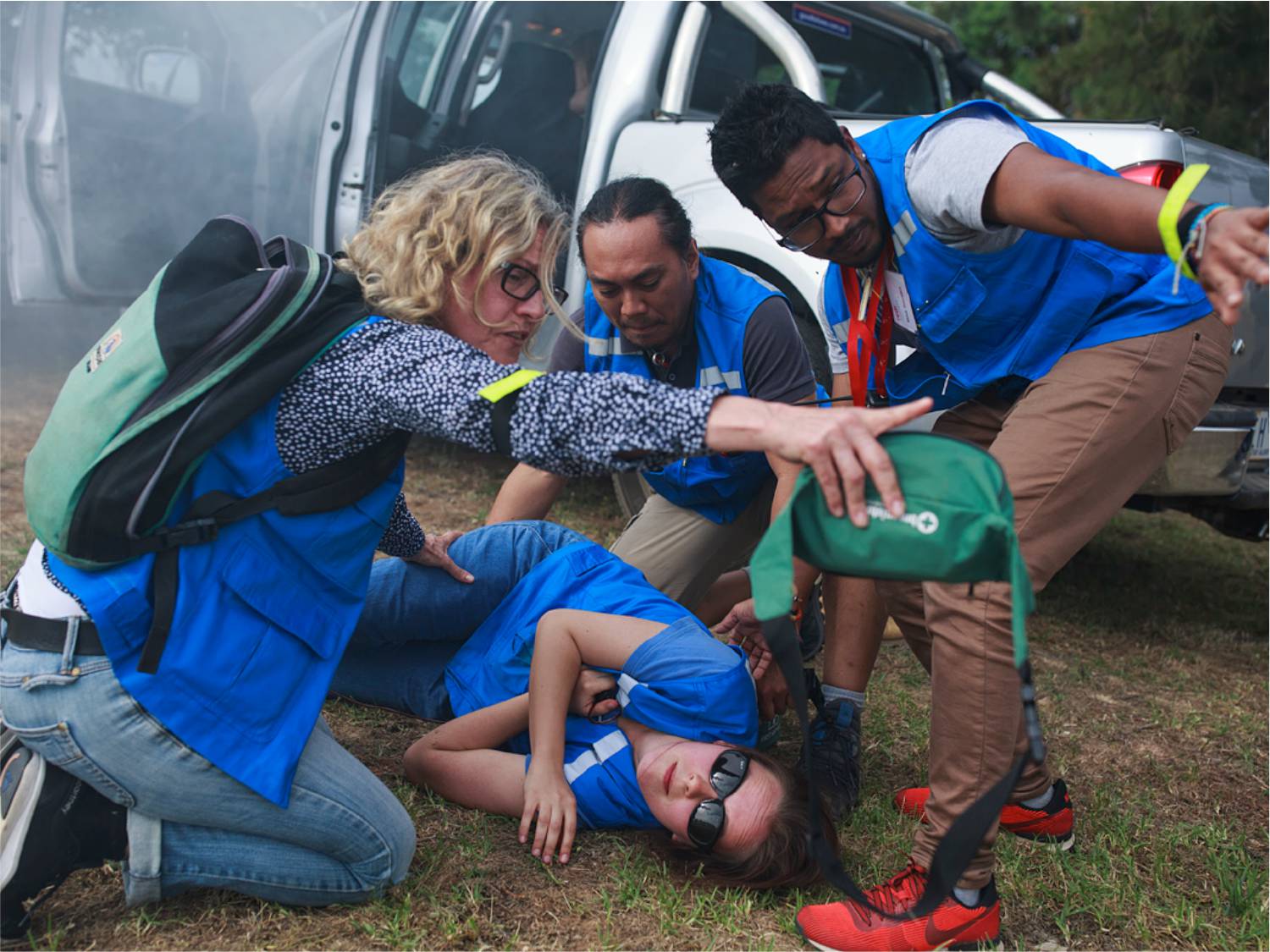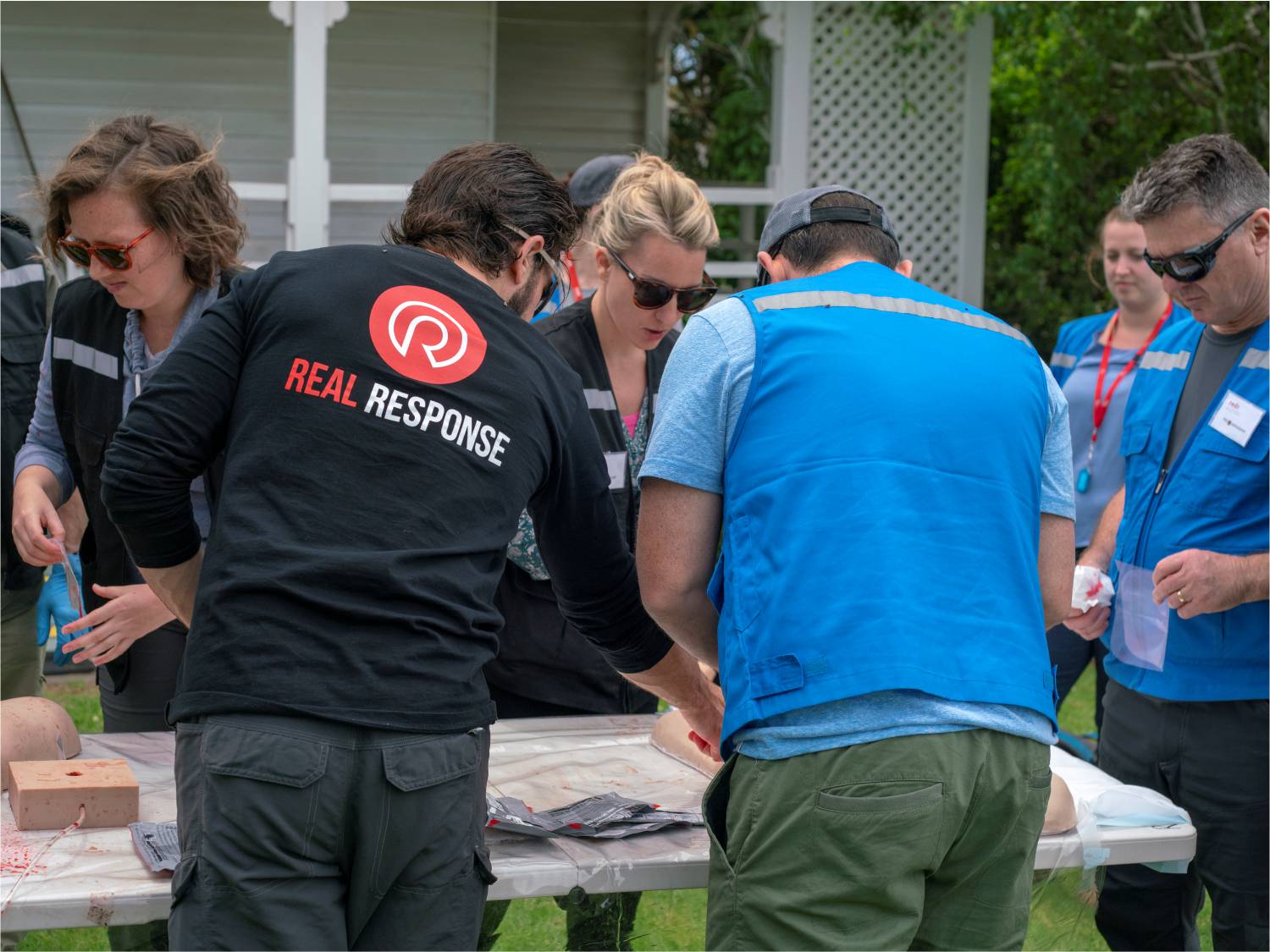Vol 49-MS. JENNY LEE

MS. JENNY LEE
Lunch time at the AHA Centre’s office has become merrier since the beginning of 2019. The laughter, casual conversations, as well as thought-provoking discussions shared during the break involves a new friend from a neighbouring country – Australia. Ms. Jenny Lee has been assigned to support the AHA Centre as a Senior Civil-Military Coordination Specialist through the Australia Assists Programme – for the first half of 2019. Her temporary assignment with the AHA Centre aims to strengthen humanitarian civil-military coordination, safety and security policies for the ASEAN-ERAT members, and AHA Centre staff. With more than 12 years of experience in the humanitarian sector, Jenny has established her expertise in civil-military coordination, safety and security, and gender. She has contributed to numerous emergency responses, in parts of Central America, Asia and the Pacific as well as supporting the search for missing MH-370 in the Southern Indian Ocean. The AHA Centre is pleased to share with you one of our in-depth conversations with Jenny.
“I was drawn to the humanitarian work because of my late grandmother. She did not introduce me to organisations like the United Nations, or different NGOs or other humanitarian agencies, but she showed me the positive impact a person can make if they have the right attitude and intentions for the community”, Jenny explains when asked about the start of her professional journey. As she recalls her childhood memories, Jenny remembers her grandmother being the unofficial “community leader”, whom neighbours turned to whenever they needed help, often creating a safe space to listen and provide support for others. This experience created a lasting impact leading Jenny to believe that becoming a humanitarian starts in one’s own home and community – regardless of education or experience.
Having worked in the humanitarian sector for over a decade, Jenny saw the impact of conflict and disasters from the affected communities. In the topic of gender, she saw similar challenges for men, women, boys and girls in 12 countries. It was common to see women and girls consistently experiencing the same obstacles that stem from gender inequality. Challenges to accessing schooling, challenges to balancing professional lives as mothers and wives, to difficulty in accessing basic female hygiene kits and health services to mention a few things. This exposure has drawn her to realise that addressing root causes of gender inequality would need to be a collective effort from everyone in all parts of the community, organisations and at the political level regardless of gender. She’s also learned that perspectives do matter, and it is crucial to understand different perspectives are important for suitable solutions.
Adopting gender lens and understanding the impact of inequality takes time and effort, and may not come naturally for many people. In this context, advocacy is difficult, and “buy-in” (convincing people that this is worthwhile) from the right people is also difficult to achieve. Advocating for anything that deals under the umbrella of gender – from organisational policy, safety and security in the field, gender balanced representation in leadership and staff, emergency humanitarian aid – can be very challenging. However, the courage to raise such issues and empowering both men and women that their perspectives are important, and can be rewarding and lead to better solutions to different issues.
Jenny has learned over the years that “how” you start the advocacy discussion makes all the difference. She’s come across soldiers, military officers and police officers who were not only keen to addressing gender inequality and wanted to make a difference on changing the structural discrimination for women to ensure they have a more effective force. However, many did share insights of how it wasn’t pleasant to be cornered into a “gender-insensitive” individual by many activists. To Jenny, she’s learned this from a friend who admitted that understanding the concept of gender perspectives and seeing what this looks like from a practitioner’s point of view was difficult as this is asking him to shift away from the mindset that he has built for over 30 years in the security sector.
Moreover, Jenny acknowledges strong leadership is a key to achieve gender equality. Leadership starts with individuals at all levels, but executive leadership is crucial for an organisation to learn and adapt to the needs and requirements to ensure that everything within the work of an organisation is gender sensitive. She’s observed different approaches of senior leaders on how they do this. Some show leadership on this as a result of personal experience and ideas, some leaders who are new to this concept choose to rely on their gender expert and rely on them to ensure that all issues are addressed.
Jenny learned that with all these leaders (male and female), when asked why they decided to take this forward, they simply stated that “it is the right thing to do”. Organisations should reflect the global 50:50 male/female ratio at all levels to ensure that the work they do sees better quality, better effect and better solutions. Another key characteristic of their leadership was that they empowered those who were working for them, giving them chances to make “productive mistakes” which always helped everyone to become better at what they do. This helped everyone on their learning journey on understanding the intricacies of gender sensitive policies and what this looked like at the practitioner level which made a huge difference.
She concludes that, “Back in Australia, in my previous role without the leadership support, I would never had the freedom and the confidence that I have today to advocate for this. So, leadership support is key, and their empowerment of my work was also a key. On reflection, the amount of trust they gave me, was quite phenomenal and I think this helped in achieving a lot of huge tasks – as well as their open-mindedness to learn new things to make the world a little bit better than yesterday. Everyone has a room to contribute and no contribution in this sector is small.”
Written by: Shintya Kurniawan | Photo : AHA Centre
- Published in The Other Side
Vol 49-THE ASEAN WORKSHOP ON DISASTER REPORTING AND BIG DATA FOR DISASTER MANAGEMENT

THE ASEAN WORKSHOP
ON DISASTER REPORTING AND BIG DATA
FOR DISASTER MANAGEMENT
Big data and the array of supporting disaster-related information has the potential to enhance the quality of disaster management policies and activities across the ASEAN region. However, much scoping, learning and sharing is still to be undertaken to begin fully realising the potential of such data. Based on this, the AHA Centre invited disaster managers and information crunchers alike to begin exploring potential and opportunities by taking part in the ASEAN Workshop on Disaster Reporting and Big Data for Disaster Management, which was held in Jakarta on the 18th – 19th of March 2019.
The AHA Centre’s Executive Director, Ms. Adelina Kamal, highlighted the importance of this innovative event during her opening address. “Back-to-back disasters in the region have shown the importance of disaster reporting and harnessing data. Interoperability across systems of ASEAN Member States and the AHA Centre is also important to enable ASEAN to become the future global leader in disaster management. Furthermore, data intelligence system will increase speed, scale, and solidarity of One ASEAN One Response” she explained to the participants, made-up of delegates from the 10 ASEAN Member States, ASEAN Dialogue Partners, regional and international organisations, academic institutions, civil societies and the private sector.
The first of the workshop’s three panel discussions focused on the Introduction of Big Data and Internet of Things, introducing all in attendance to the concepts and potentials of big data, predictive analytics, Artificial Intelligence (AI) and Internet of Things (IOT). The session included talks from Ms. Derval Usher (Head of Office, UN PulseLab Jakarta), Dr. Ismail Fahmi (CEO of Media Kernels Indonesia), and Mr. Syafri Bahar (Vice President of Data Science, GO-JEK). Following-on from this was a panel about Humanitarian Data and Applications to learn from existing use and trends of big data, predictive analytics, AI and IOT, and their applications for disaster management. Insights included from Mr. Yantisa Akhadi (Country Manager, Humanitarian OpenStreet Map), Mr. Faizal Thamrin (UNOCHA Humanitarian Data Exchange), and Dr. Daisuke Sasaki (Assistant Professor International Research Institute of Disaster Science – IRIDeS Japan). The panel sessions wound-up with a discussion on the Future of Humanitarian Data Intelligence, particularly within the ASEAN context, and was provided insights from Dr. Mizan Bisri (Post-doctoral Researcher, United Nations University Institute of Advanced Study of Sustainability Japan) and Mr. Ray Shirkhodai (Executive Director, Pacific Disaster Center based in Hawaii).
The second day of the workshop brought participants together through a group discussion on a wide range of topics related to the previous day’s content – and invited groups to relate the ideas and innovations to the current context within their own country. The resulting outcomes included recommendations for utilising data for more strategic humanitarian assistance, creating stronger connections between the AHA Centre and ASEAN Member States for more modern data collection and provision – particularly related to Big Data’s potential for stronger forecasting, and exploring potential challenges and opportunities for National Disaster Management Organisations to apply the valuable big data mechanisms. Potential was highlighted for the AHA Centre to engage universities in big data, to utilise potential of big data research, training and capacity building. In this regard, it may be a good the idea for the AHA Centre to have a collaboration with ASEAN University Network, among others. Challenges were also identified regarding data sharing and data protection policy, raising the need for the development of regional data governance mechanisms.
UNDERSTANDNG THE FIVE VS OF BIG DATA:

As the innovative and forward-thinking event came to its close, Mr. Yasushi Furukawa from Japan’s Ministry of Internal Affairs and Communication highlighted the benefit of such efforts, from the perspective of the Japan-ASEAN Integration Fund (JAIF) as a key supporter of the workshop and the AHA Centre’s overall Information Communications and Technology programming. He stated that the Government of Japan was delighted to support and contribute to the implementation of the AHA Centre ICT Project since Phase I in 2011, continuing until now with ICT Phase IV. He expressed his great appreciation to the AHA Centre in organising such a workshop, and looks forward to the region recognising the potential that big data holds.
Written by : Shintya Kurniawan, Wiliam Shea | Photo : AHA Centre
- Published in AHA Centre Diary 1
Vol 49-SDC SWISS AGENCY FOR DEVELOPMENT AND COOPERATION

SDC
AGENCY FOR DEVELOPMENT AND COOPERATION
The Government of Switzerland, through the Swiss Agency for Development and Cooperation (SDC), highlights humanitarian aid as a key priority within its international development efforts. Disaster risk reduction, emergency relief, and reconstruction are the three pillars of the SDC’s humanitarian activities, therefore aligning them strongly with the AHA Centre’s role in the ASEAN region. Throughout the last few years the SDC and AHA Centre have worked on a range of activities aiming to advance the ASEAN region’s disaster management practices and processes, forming the base of this key strategic partnership between the two bodies.
As part of this partnership, in 2018 the SDC supported the AHA Centre on the implementation of a real-time earthquake disaster response simulation, together with the Global Initiative on Disaster Risk Management (GIDRM – as covered in the Column Volume 48), which facilitated the AHA Centre staff to implement internal preparedness and response mechanisms, and included a review and evaluation following the scenario. SDC has also provided support through a range of expertise and consultations within AHA Centre programming, including two for the ARDEX-18 Referee Training in July 2018, and the implementation of ARDEX-18 in later in November. The experts were not only engaged directly in the activities, but also supported performance reviews of the AHA Centre’s emergency operations functions once the event had finished.
Additionally, Switzerland also provided funding support during 2018 to facilitate the AHA Centre’s participation in the Asian Ministerial Conference on Disaster Risk Reduction in Mongolia, also ensuring best practices from the region could be highlighted at this important event. Such support and engagement is of high importance for the AHA Centre, as it allows for a united and strong ASEAN voice on the international disaster management stage. This importance was further strengthened by the AHA Centre’s Executive Director Ms. Adelina Kamal when she stated recently that.
“ONE OF THE MOST IMPORTANT TASKS OF THE AHA CENTRE IS TO ENABLE THE ASEAN REGION TO ACHIEVE ITS VISION OF BECOMING THE GLOBAL LEADER ON DISASTER MANAGEMENT BY THE YEAR 2025. WE HIGHLY APPRECIATE THAT THE SWISS GOVERNMENT AS THE HOME OF INTERNATIONAL HUMANITARIAN COMMUNITY SEES THIS IMPORTANCE AND HAS HELPED ASEAN THROUGH THE AHA CENTRE CLIMB THAT LADDER BY CONNECTING US WITH OTHER REGIONAL ORGANISATIONS AND THE INTERNATIONAL HUMANITARIAN COMMUNITY”
Written by: Wiliam Shea | Photo : AHA Centre, SDC
- Published in Partnership
Vol 49-TIDAL FLOODING INSIGHT INTO A UNIQUE PHENOMENON

TIDAL FLOODING
INSIGHT INTO A UNIQUE PHENOMENON
For this Column Volume’s Insight, the AHA Centre invited a young contributor who was also one of its interns – Eviana Rosida – to develop an interesting and informative article. Evi’s current studies in disaster management see her focusing on the unique occurrence of tidal flooding, upon which she has developed this volume’s Insight article. For the ASEAN region, with a coastline 173,00 km in total length, and nine nations bordering the sea or having maritime zones, the potential for tidal flooding is significant. Increasing population density in coastal areas across the region also increases potential impact, while many high-density areas facing the sea are formed by coastal cities.
ABOUT TIDAL FLOODS
Tidal floods in coastal areas may happen due to the process of rising sea water, tidal waves (different from tsunami), the high flow of river water, or general sea level rises. Naturally, tropical cyclones can also trigger a tidal flood. A tidal flood is a flood due to the tidal process that inundates land/coastal areas that are located lower than the average sea level. Long ocean waves are related to tides, and are characterised by the rhythmic rise and fall of the sea surface after a period of several hours. A rising tide is usually referred to as the flow, while the decreasing tide is called the ebb.
There is also a connection between tides and the sun and moon. Tides are in their highest state when the moon is full or new, and high tidal times at a particular location can be estimated (but not exactly) associated with the position of the moon in the sky. Water at the end of the beach bordering the ocean never stays at a fixed height, but they always move up and down according to the tide cycle. These elements also have an impact on tidal flooding.
THE FORMATION OF TIDAL FLOOD PROCESS
As the tidal process undertakes its vertical movement of sea level, these shallow water waves are produced by the gravitational force of the moon and sun on the ocean. The intensity of the force varies according to the position of the moon, sun and earth, and as a result, large tides see the water (with the help of gravitational forces) flow into low places and fill the space, inundating these lower parts.
Tidal flood can be caused by anthropogenic activities, particularly due to land degradation. Human populations living in coastal areas result in high use of groundwater. This use of ground water that exceeds the limit of the groundwater’s ability to replenish is called exploitation, and can increase vulnerability to inundation due to tidal flooding. Tidal floods have hit several areas in Java, Indonesia for example, as the density of people who live on Java has an impact on land subsidence, with high groundwater exploitation causing water to easily inundate the land. The impact of tidal flood sees bodies of sea water causing damage to asphalt roads, and damage to motorised vehicles and bicycles. In addition, sea water that enters the land (sea water intrusion) causes the groundwater to taste salty, and meaning it cannot be used as raw material for drinking water or for daily needs. Salty groundwater can also have a significant negative effect on farming livelihoods in an inundated region.
TIDAL FLOOD PREVENTION
In the short-term, such events may be prevented by building dikes to withstand the tidal waves of sea water heading to the mainland. More long-term, the effect of tidal flooding can be reduced by planting mangroves. Mangrove forests play an important role as ocean wave breakers, retaining wind speeds, and as a habitat for various flora and fauna. Such biological prevention techniques can also be supported by physical development, such as building wall borders between sea and land to act as a wave breaker. Communities who live in coastal area must also be aware about rising sea levels, and reducing exploitation of groundwater so that land subsidence can be avoided.
- Published in Insight
Vol 49-MONTHLY DISASTER REVIEW AND OUTLOOK

MONTHLY DISASTER REVIEW AND OUTLOOK
MARCH 2019 | DISASTER MONITORING & ANALYSIS
(DMA) UNIT, AHA CENTRE
GENERAL OVERVIEW OF MARCH 2019
March ended the first quarter of 2019 continuing the trend of lower disaster occurrences compared to its five-year average. This month registered 61% of its five-year average number of disaster occurrences, similar to the statistics of January 2019. However, the number of affected persons was more than 10 times the average for March, and the number of casualties is more than 13 times more than the previous 5 years on average. These considerable differences were driven by two significant events – the drought in North Cotabato, Philippines and the flooding in Sentani, Indonesia. 60% of this month’s affected population is attributed to the Philippines drought, particularly due to the drought’s extensive geographic coverage. On the other hand, 92% of this month’s casualties resulted from the flooding and landslide in Sentani, Indonesia. The primary factor for these figures can be attributed to the timing of the flash flood, which happened at night while most of the residents were sleeping in their homes. This highlights the importance of availability, accessibility, and utilisation of early warning information to drive early action.
Geophysical disasters decreased in March compared to the previous 2 months, with only 23 earthquakes of magnitude 5.0 and above recorded in the region. Of these recorded earthquakes, only one resulted in loss of life. A shallow earthquake with magnitude 5.4 struck north of Selong City in East Lombok Regency, Indonesia. This resulted in damage and collapse of structures in the area, as well as falling rocks and debris at the nearby Tiu Kelep Waterfall in North Lombok Regency, which resulted in the deaths of two tourists visiting the site. This highlights the nature and need for multi-disciplinary and cross-cutting approaches in disaster management
SEASONAL OUTLOOK
The ASEAN Specialised Meteorological Centre reports the end of the Northeast Monsoon, and that onset of the inter-monsoon period is taking place. This is the transition phase between the Northeast and Southwest Monsoons, which is characterised by increased occurrence of scattered rain showers in the region. While seasonal forecast models point to a general increase in rainfall frequency, and a geographic expansion of rain showers, precipitation on the other hand ranges from normal in the Philippines to below-normal in eastern Indonesia and the northern ASEAN region. While the amount of rainfall may not be considerably large, the increase in exposure may still trigger flooding and rain-induced landslides.
Statistically, large-scale disasters that require regional-level response occur during the second half of the year. At the end of 2019’s first quarter, the AHA Centre is wrapping up its preparatory activities for emergency response and other events. This includes the updating and preparation of Common Operational Datasets, 11th ASEAN-ERAT Induction Course, the preparation for the launch of the DELSA satellite warehouses and many more. Activities such as these help prepare the AHA Centre, and the region, to respond to disaster whenever and wherever it may strike.
Data Sources: ASEAN Disaster Information Network, ASEAN Specialised Meteorological Centre
Written by : Lawrence Anthony Dimailig
DISCLAIMER
Disclaimer: AHA Centre’s estimation is based on data and information shared by National Disaster Management Organisations (NDMOs) and other relevant agencies from ASEAN Member States, international organisations and news agencies. Further information on each recorded-significant disaster, description and detail of data and information are available at: http://adinet.ahacentre.org/reports.
- Published in Monthly Disaster Outlook
Vol 49 – THE LAUNCH OF ARMOR FIRST EDITION

THE LAUNCH OF ARMOR FIRST EDITION
The ASEAN Risk Monitor and Disaster Management Review (ARMOR) is the AHA Centre’s newest information publication – a journal that aims to combine science, policy recommendations, and review of actual practices in disaster management. ARMOR’s development is a primary element of the AHA Centre’s efforts to increase the ASEAN region’s knowledge and skills within the global disaster management field, with the first edition published during March 2019. To celebrate this significant achievement, the AHA Centre held ARMOR’s launching event on the 20th of March in Jakarta, Indonesia.
A key aim of ARMOR – is to bridge the gap between science and decision-making in disaster management, with the launch event opening discussions between scientists and decision-makers who were in attendance. The event was officially opened by the Deputy Secretary – General (DSG) of ASEAN for Community and Corporate Affairs – H.E. AKP Mochtan, the Ambassador of the United Kingdom to Indonesia and Timor Leste – H.E. Moazzam Malik, and the AHA Centre’s Executive Director – Ms. Adelina Kamal. Overall, over 100 guests attended the event, including representatives from ASEAN Member States, ASEAN Dialogue Partners, the British Embassy in Jakarta, senior officials of the Indonesian government, a range of AHA Centre partner organisations, academic and scientific community and journalists.
The importance of ARMOR for disaster management in the ASEAN region was reflected by DSG AKP Mochtan in his speech, in which he not only congratulated the AHA Centre for its work on the publication, but also highlighted the functionality of the publication for regional disaster managers and decision-makers.“I would like to congratulate the AHA Centre for its tremendous work in providing a critical platform to bridge science and decision making in the region. The launch of ARMOR is an auspicious critical step forward to building knowledge in the ASEAN community and a valuable opportunity for ASEAN to re-examine our evidence-based decision-making processes. As one of the most highly vulnerable regions to catastrophic disasters, ASEAN has no other alternative but to work toward institutionalising resilience among its communities and peoples.”
During the event, sections from the 10 chapters of ARMOR’s first edition were also discussed by regional disaster management professionals who contributed to the writing, including Dr. Mizan Bisri of the United Nations University Institute for the Advanced Study of Sustainability and Mr. Lawrence Anthony Dimailig of the AHA Centre. The discussion panel – moderated by Said Faisal, the former Executive Director of the AHA Centre who also served as a member of the Board of Editors of ARMOR – gained significant insights and feedback from guest experts such as Dr. Allistair Cook from the Rajaratnam School of International Studies in Singapore, and Mr. Ray Shirkhodai, the Executive Director of the Pacific Disaster Center based in Hawaii.
The success of the launching, and importance of ARMOR overall was reaffirmed by Executive Director of the AHA Centre, Ms. Adelina Kamal during her speech in which she stated that “ARMOR aims to put science at the centre of decision-making process. We are very pleased to launch ARMOR, and hope that the report will be beneficial for our stakeholders to address disaster management across the region”. Ms. Kamal also expressed gratitude to all those involved, reminding all in attendance that “the resources required to develop the ARMOR report are not those of the AHA Centre’s alone, but from the active contribution and participation of the authors, reviewers, editors, and partners of the AHA Centre”.
Written by: Wiliam Shea | Photo : AHA Centre
- Published in Highlight
Vol 48-PROF. DR. KUNTORO MANGKUSUBROTO

PROF. DR. KUNTORO MANGKUSUBROTO
Prof. Dr. Kuntoro Mangkusubroto is one of Indonesia’s and ASEAN’s leading figures on disaster recovery and reconstruction. With a deep background forged through a variety of governance and private business roles focused towards energy and natural resources, Dr. Mangkusubroto is also the founder of the School of Business and Management of the Bandung Institute of Technology (ITB). His leadership as the head of the Aceh-Nias Rehabilitation and Reconstruction Agency from in 2005-2009 – which saw him oversee post-tsunami reconstruction and utilisation of local and international assistance to rebuild the shattered region – elevated Dr. Mangkusubroto to become one of the region’s most renowned leaders in disaster management.
Dr. Mangkusubroto’s success leading post-tsunami reconstruction efforts has seen him become a go-to resource in other ASEAN disaster response and recovery efforts – being invited to engage in disasters across ASEAN Member States including Myanmar and the Philippines, as well as international efforts in Nepal and Japan. During 2018’s AHA Centre Executive (ACE) Programme’s Leaders Talk series, participants had the opportunity to learn about the key concepts and integral elements of strong leadership in disaster recovery from Dr. Mangkusubroto himself. Central to Dr. Mangkusubroto’s message was the importance of trust and integrity of ASEAN leaders in disaster management and coordination.
To gain this trust, Dr. Mangkusubroto says, leaders must be able to approach key players and parties to ensure efficiency in logistics and other disaster management processes. He emphasises that knowing who to approach and what to say is key to overcoming the variety of obstacles that can arise during a disaster response. It is through these approaches and the conveying of succinct and clear information that shows one’s integrity, and with this integrity the trust is then strengthened. Dr. Mangkusubroto also highlights the importance of understanding specific contexts and cultures of communities across the region, and that leaders must be prepared to recognise and, importantly, overcome issues for better results for the people as a whole.
“As a leader, people will come to you continuously – they may be angry, sad or unstable due to their losses”, he said. “Just let them release, listen to them, and just give them your sympathy, as once you’ve finished your work, they’ll realise you are serious.” .
To gain this trust, Dr. Mangkusubroto says that leaders must be able to approach key players and parties to ensure efficiency in logistics and other disaster processes. He emphasises that knowing who to approach and what to say is key to overcoming the variety of obstacles that can arise during a disaster response. It is through these approaches and the conveying of succinct and clear information that shows ones integrity, and with this integrity the trust is then strengthened. Mr. Mangkusubroto also highlights the importance of understanding specific contexts and cultures of communities across the region, and that leaders must be prepared to recognise and, importantly, overcome issues for better results for the people as a whole.
Recalling the experiences from the huge reconstruction efforts after the Indian Ocean Tsunami in Aceh, Dr. Mangkusubroto highlights the importance of remaining calm and focused during the midst of high emotions and traumatised communities. “As a leader, people will come to you continuously – they may be angry, sad or unstable due to their losses”, he said. “Just let them release, listen to them, and just give them your sympathy, as once you’ve finished your work, they’ll realise you are serious”. These are just some of the challenges faced by disaster managers and leaders in the field, and overcoming these calmly and reasonably are a big part of what regional leaders must aim to achieve.
After discussions on a range of contexts and experiences faced by leaders in disaster management, Dr. Mangkusubroto concludes on the key elements of efficient and effective disaster management leaders – particularly when in the field in the period after large disasters strike. He emphasises the importance of coordination and communication, whether with governments, local and international responders, logistics providers and the affected communities themselves. He highlights that all parties are there to help and support in their own way, and it is up to the leaders to ensure all parties come together to achieve the greatest results. Dr. Mangkusubroto insists that regardless of the mix of contexts, cultures or political influences at play, the best outcomes can and must be achieved for an effective and sustainable recovery and reconstruction phase. And this, he reminds us, is the key role of ASEAN leaders on disaster management.
Written by : William Shea | Photo : AHA Centre
- Published in The Other Side
Vol 48-(GIDRM) GLOBAL INITIATIVE ON DISASTER RISK MANAGEMENT

GIDRM
GLOBAL INITIATIVE ON DISASTER RISK MANAGEMENT
Disaster Risk Management (DRM) forms a key element of all international development agendas and its implementation is an important element for all nations. Such importance and presence, however, has been found to lead to a range of cost burdens, overlapping programmes, and working duplications as varying government and non-government agencies undertake their DRM activities. The German-funded Global Initiative on Disaster Risk Management (GIDRM) project aims to overcome these obstacles, and create efficiency and coherence within national and international DRM efforts.
Based on the realisation of such agendas as the Sendai-Framework, Paris Climate Agreement and Agenda 2030, GIDRM works to link a range of DRM elements of such agendas through planning, implementation and reporting of DRM requirements. Funded through the German Federal Ministry for Economic Cooperation and Development (BMZ), the GIDRM has engaged with the AHA Centre and a number of ASEAN nations during the second phase of the project, specifically working with the Philippines who have been designated as one of GIDRM’s two key pilot countries (the second being Mexico). Rather than a top-down approach, GIDRM works to support efforts from the bottom-up. Examples of successful coherence and efficiency from national and sub-national levels aim to be highlighted at regional and global level, to promote learning and good practices, and form recommendations for expanded activity implementation.
The partnership between GIDRM and the AHA Centre began in 2016, and has resulted in a range of workshops and training exercises, implemented both specifically for the AHA Centre and also engaging a wider range of regional disaster management stakeholders. In 2018, the AHA Centre and GIDRM undertook an earthquake disaster response simulation, allowing the AHA Centre staff to practice their internal preparedness and response mechanisms, which were reviewed and evaluated after the scenario took place. GIDRM also previously supported implementation of the ASEAN Regional Disaster Emergency Response Simulation Exercise (ARDEX) 2016 in Brunei Darussalam, and worked with the AHA Centre and ASEAN Member States to review ARDEX processes, as well as wider mechanisms including the Standard Operating Procedure for Regional Standby Arrangements and Coordination of Joint Disaster Relief and Emergency Response Operations (SASOP).
Written by : William Shea | Photo : AHA Centre
- Published in Partnership
Vol 48-ASEAN-ERAT IN-COUNTRY NETWORK, LAO PDR

ASEAN-ERAT
IN-COUNTRY NETWORK, LAO PDR
Two years ago during May 2017, the ASEAN Emergency Response and Assessment Team (ASEAN-ERAT) Advisory Group Meeting agreed on the concept of an ASEAN-ERAT In-Country Network. The main objectives of the ASEAN-ERAT In-Country Network include:
1. Maintaining communication among ASEAN-ERAT members in their respective countries, as well as enhancing coordination among ASEAN-ERAT members, National Disaster Management Organisations (NDMOs), and the AHA Centre
2. Facilitating information and knowledge sharing, as well as promoting dialogue for improving the ASEAN-ERAT system
3. Leveraging the adopted ASEAN-ERAT system to be recognised by the national stakeholders
4. Further enhancing rapid deployment of ASEAN-ERAT members in times of emergencies
Following 2018’s establishment of the ASEAN-ERAT In-Country Network in Myanmar and Philippines, the AHA Centre facilitated the establishment of the 3rd network in Vientiane, Lao PDR, during early 2019. Thus, adding another milestone towards reaching the goal of setting-up similar networks in 6 ASEAN Member States by the end of 2019, as part of the ASEAN-ERAT Transformation Plan. This historic milestone for ASEAN-ERAT took place back-to-back with a ‘Familiarisation of ASEAN Disaster Management’ workshop, which was held on the 12-13 February 2019. The objective of the workshop was to provide an overview of disaster management mechanisms in ASEAN to ministries and other stakeholders, as well as to provide insight into areas of cooperation to enhance disaster management in Lao PDR and the ASEAN region.
The workshop was organised by the Social Welfare Department, Ministry of Labour and Social Welfare of Lao PDR, supported by the AHA Centre, and attended by participants from relevant ministries such as the Ministry of Foreign Affairs, Ministry of National Defense, Ministry of Public Security, Ministry of Natural Resources and Environment, Ministry of Science and Technology, and Ministry of Culture, Information and Tourism. A number of partners were also present during the meeting, such as Lao Red Cross, Bank of Lao PDR, and ASEAN-ERAT members who are based in Lao PDR.
Written by : Melya Wardhani | Photo : AHA Centre
- Published in AHA Centre Diary 3
Vol 48-HEAT TRAINING

HEAT TRAINING
Humanitarian workers in emergency response not only face ongoing dangers due to natural hazards, but also can be vulnerable to lawlessness, political instability and armed conflict in areas with access and infrastructure difficulties. Issues such as harassment, interactions with aggressive armed combatants, day light robbery and traffic accidents are all realistic risks, requiring humanitarian responders to be prepared on how to deal with such challenges should they arise. To increase preparedness for the occurrence of potential conflict situations in the future, members of the AHA Centre team departed to Australia to undertake RedR Australia’s 5-day Hostile Environment Awareness Training (HEAT) course from the 4th to the 7th of February, 2019, in Dookie, Victoria.
The HEAT course includes integrated Tactical Emergency Casualty Care (TECC) training which combines theory and practical-based emergency medical training. Such TECC skills include commercial and improvised tourniquets and haemorrhage control, airway management of an unconscious casualty and an array of improvised techniques teaching participants how to save and preserve life with limited resources. This was highlighted as a key element of the course relevant to the AHA Centre, with participants also valuing other elements such as ‘movement under fire’, that would be of benefit should responders find themselves in such situations.
Engaging in risk preparedness trainings such as HEAT supports the capacity of AHA Centre staff to be ready for any situation, regardless of the context and expectations. Participants noted the real-life’ feel of numerous simulations, explaining that they reflect potential occurrences that may take place during response. The use of practical training with dummies during TECC, and direct engagement scenarios such as kidnapping, ensure the team now hold hands-on practical knowledge of how to react in such undesirable situations. Overall, while such occurrences may be few and far between for the AHA Centre staff, there is now sufficient awareness and skills to counter such risks should they arise during emergency response assignments in all locations.
Written by: Wiliam Shea | Photo : RedR Australia
- Published in AHA Centre Diary 2
- 1
- 2

